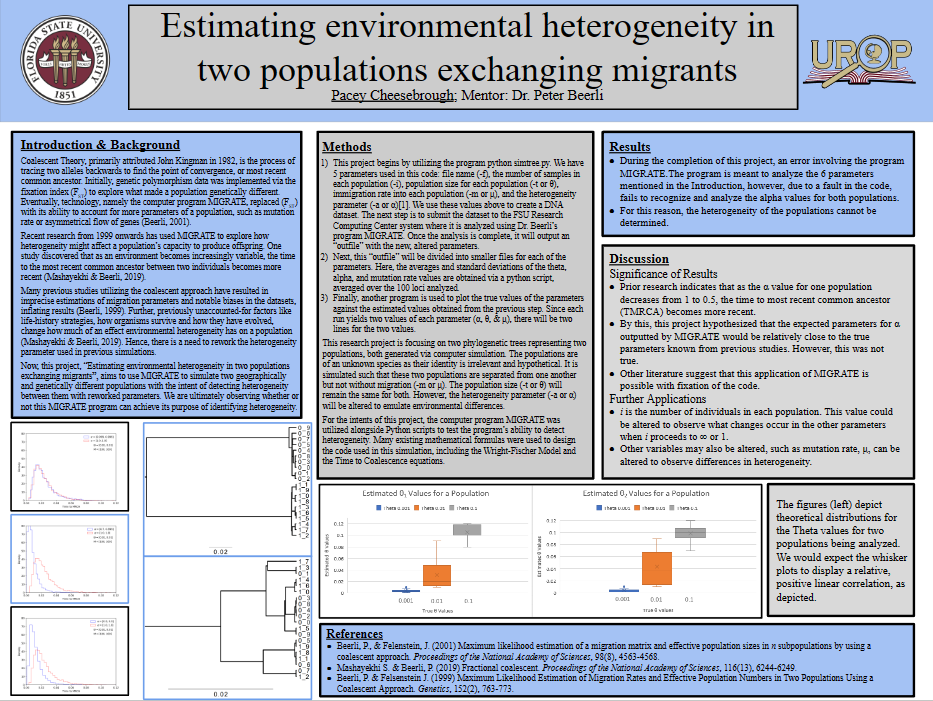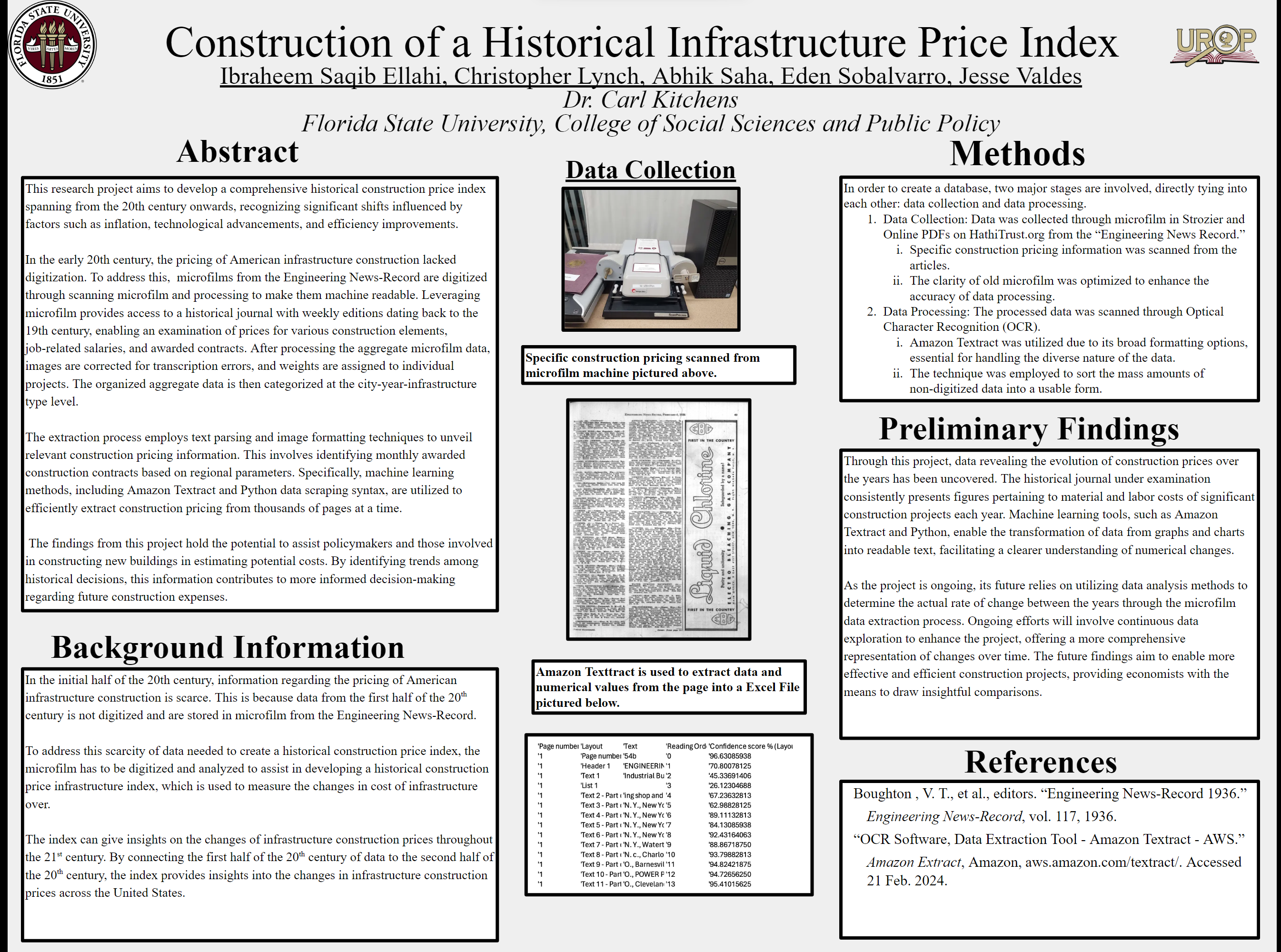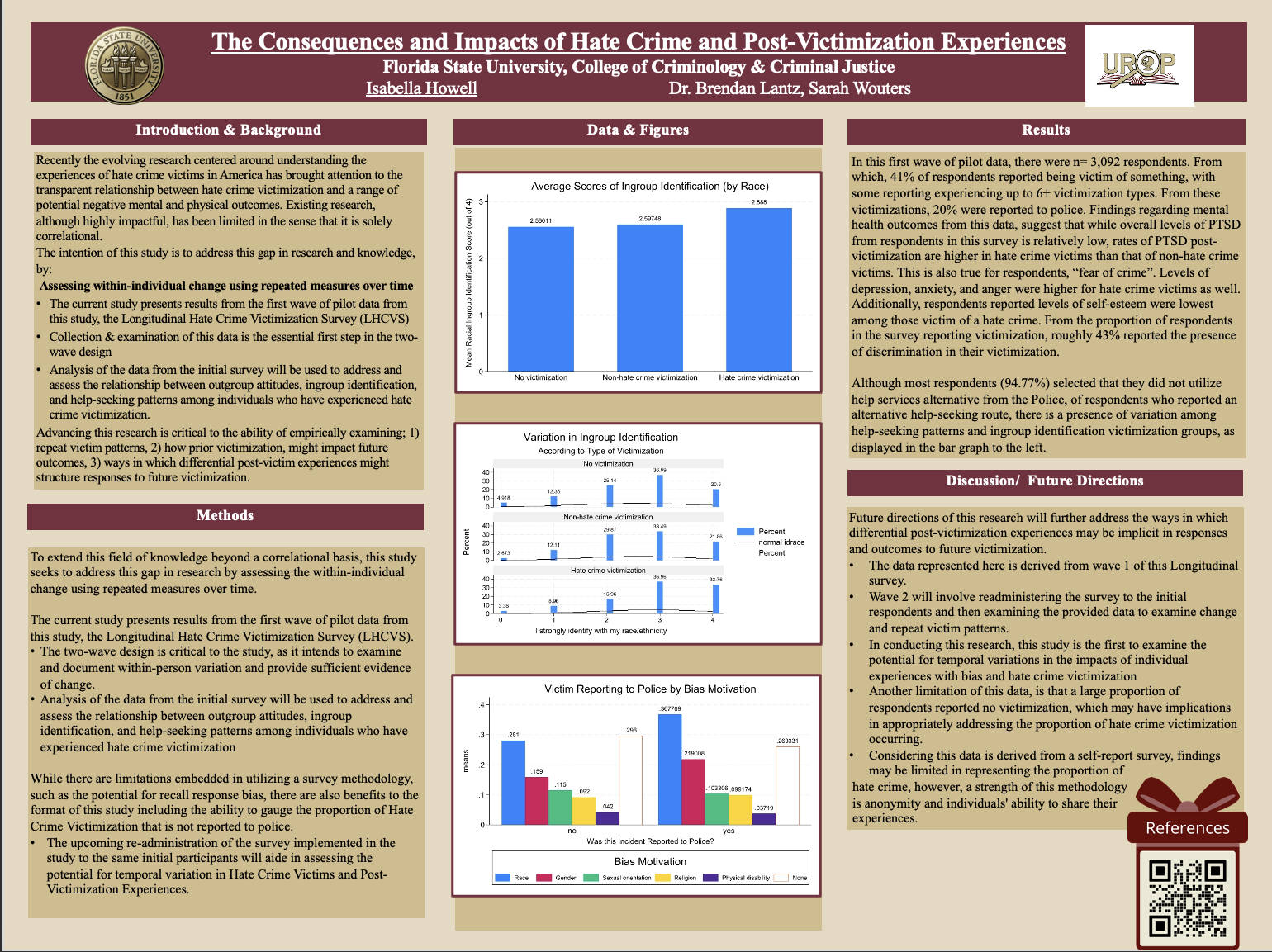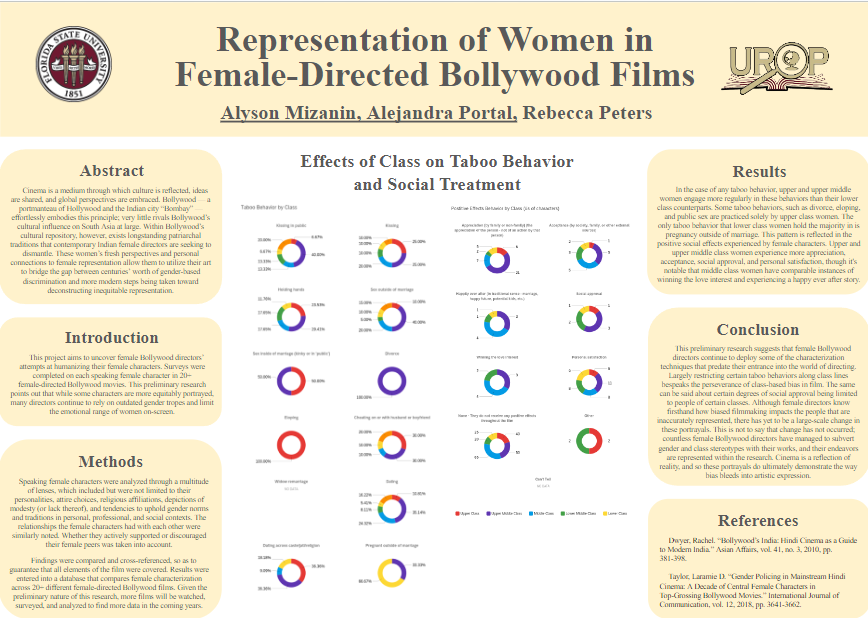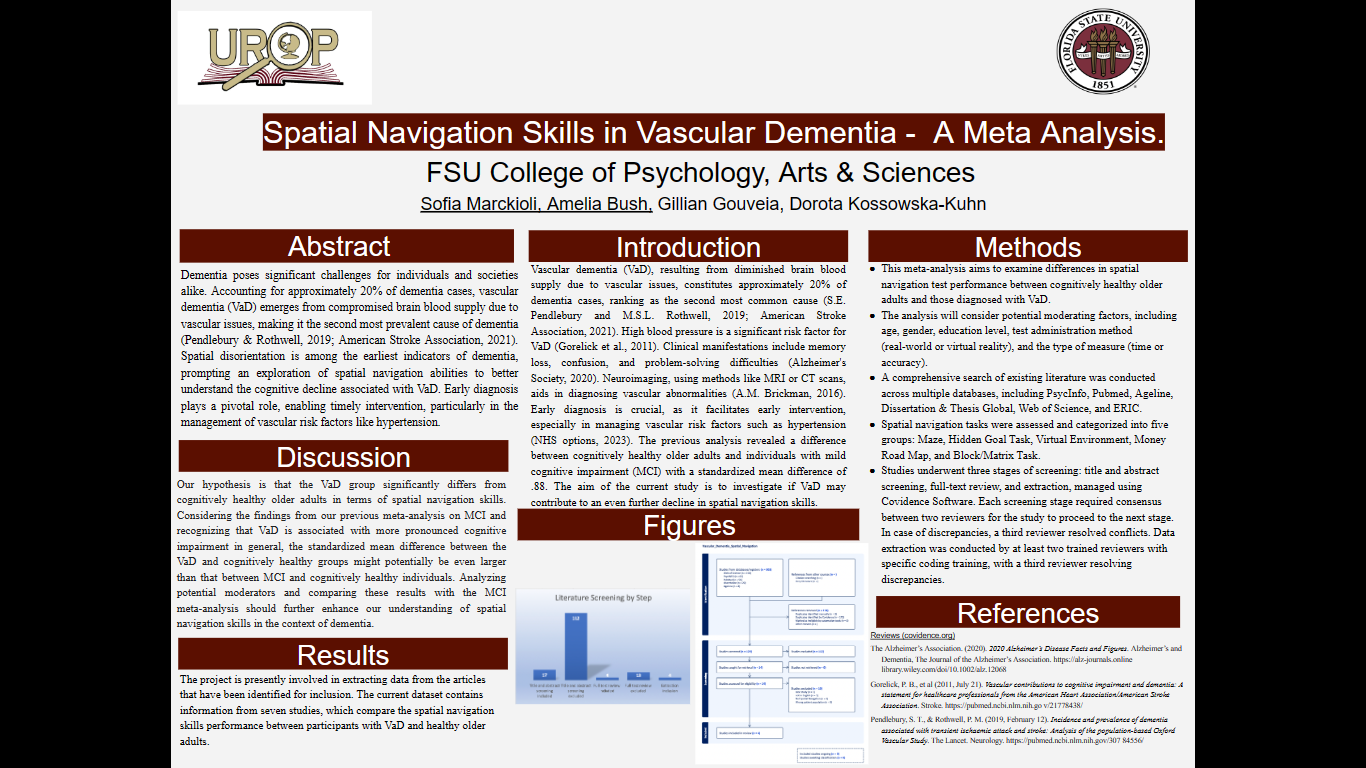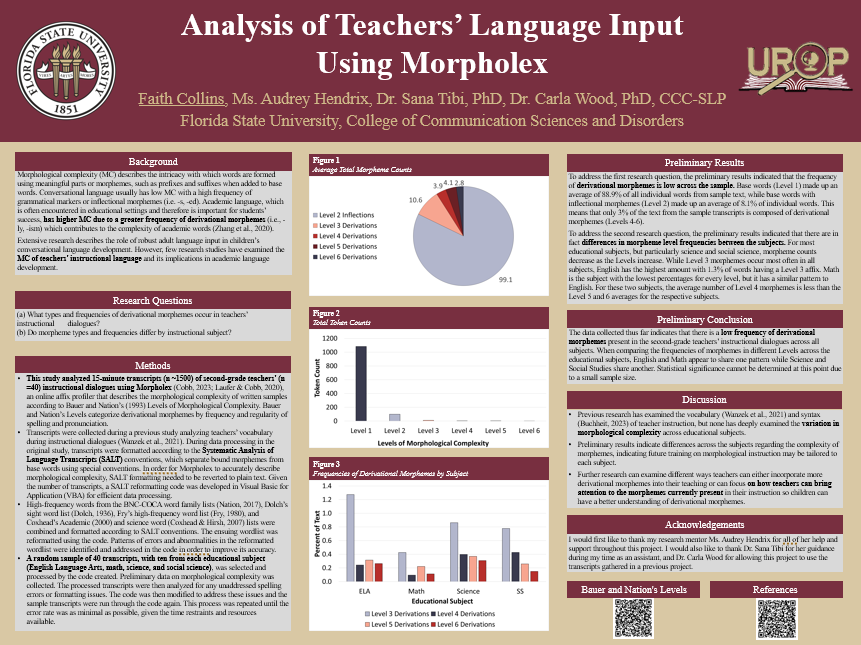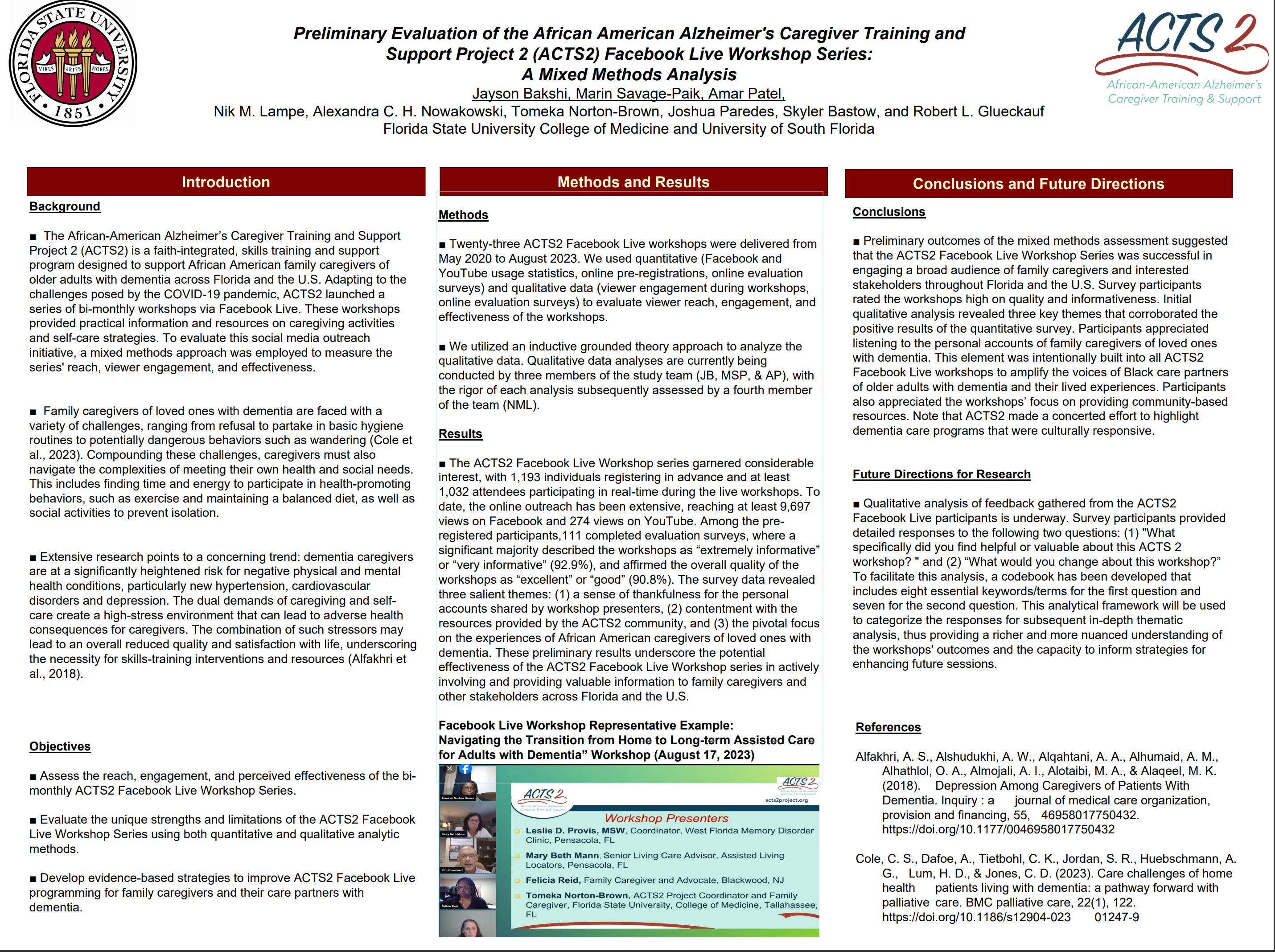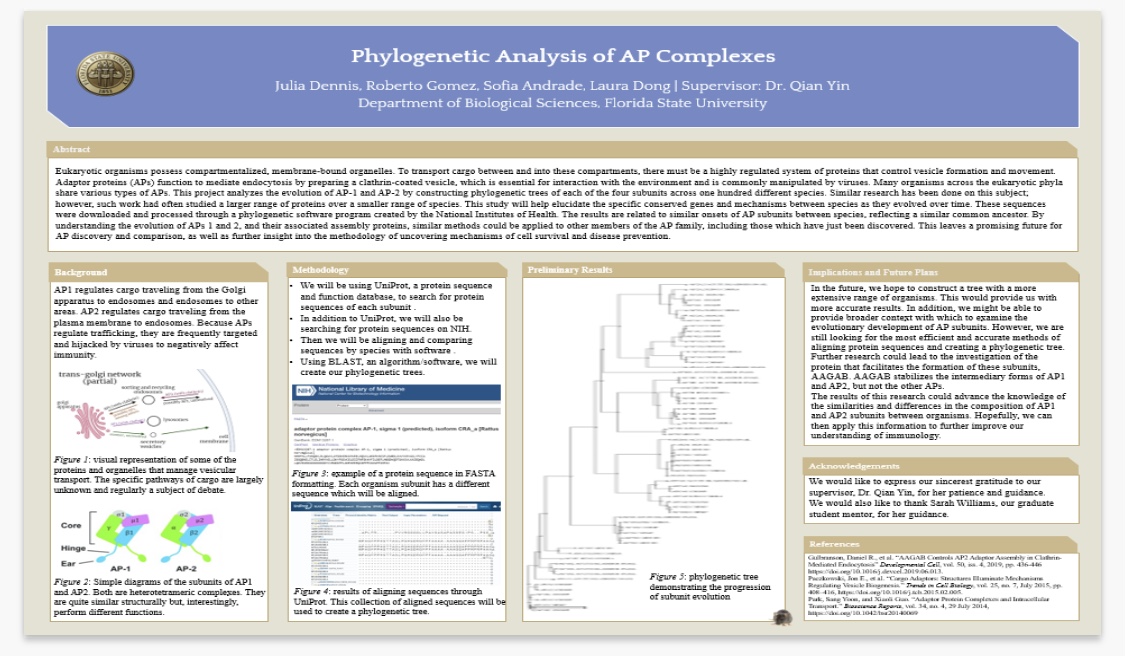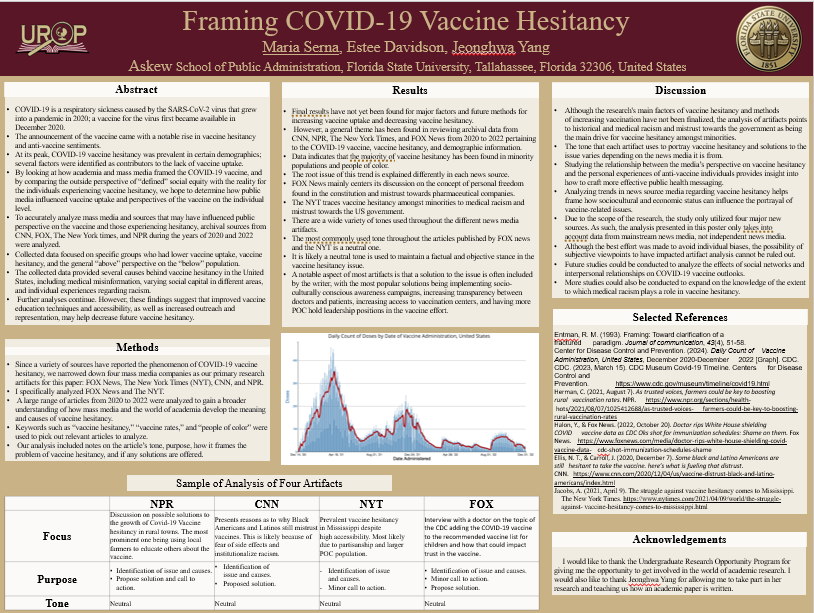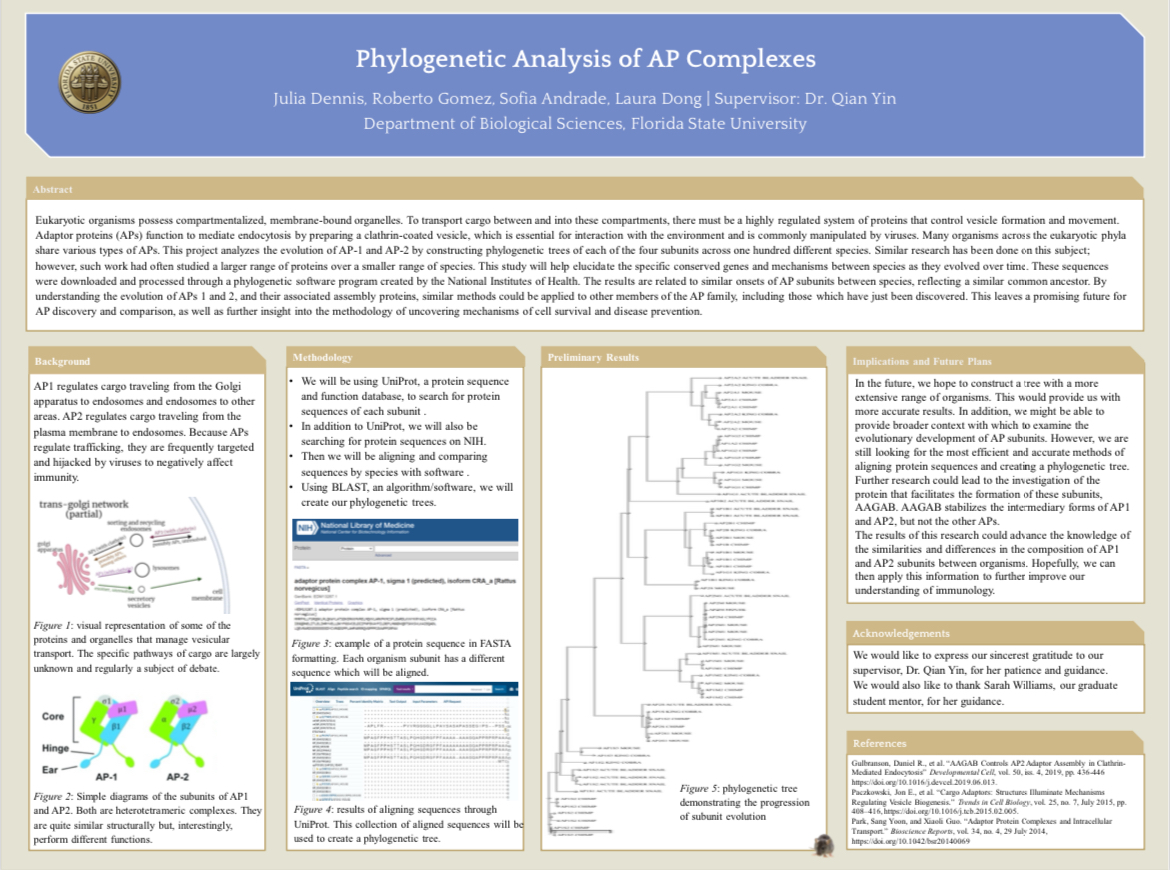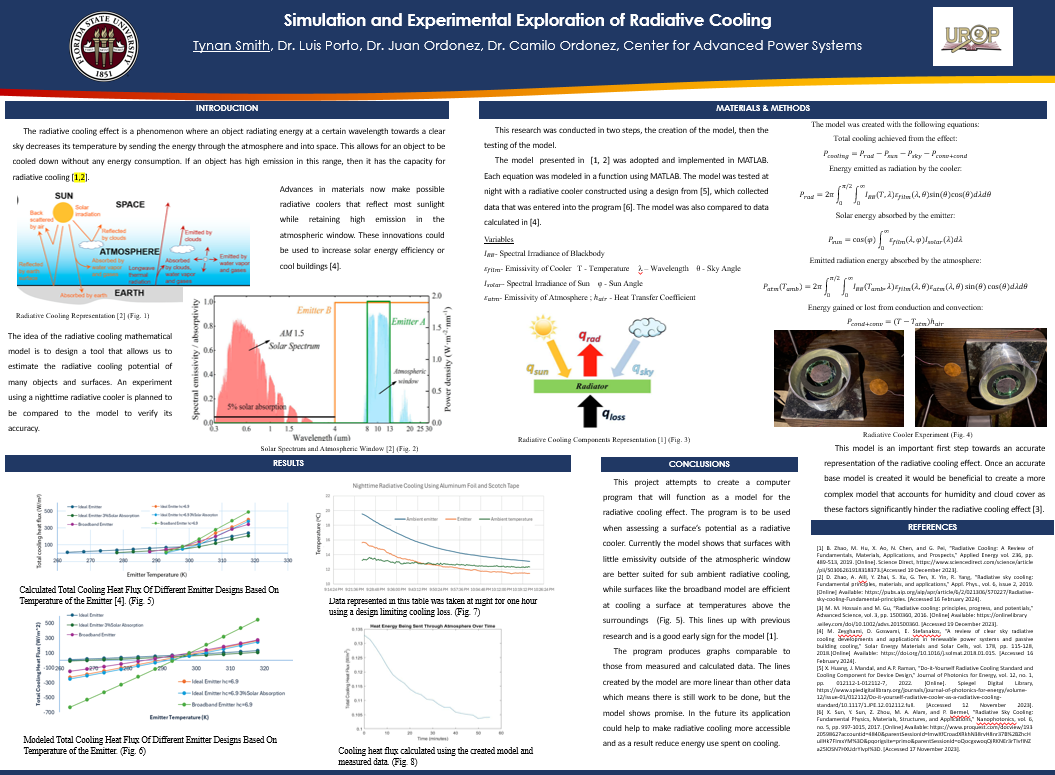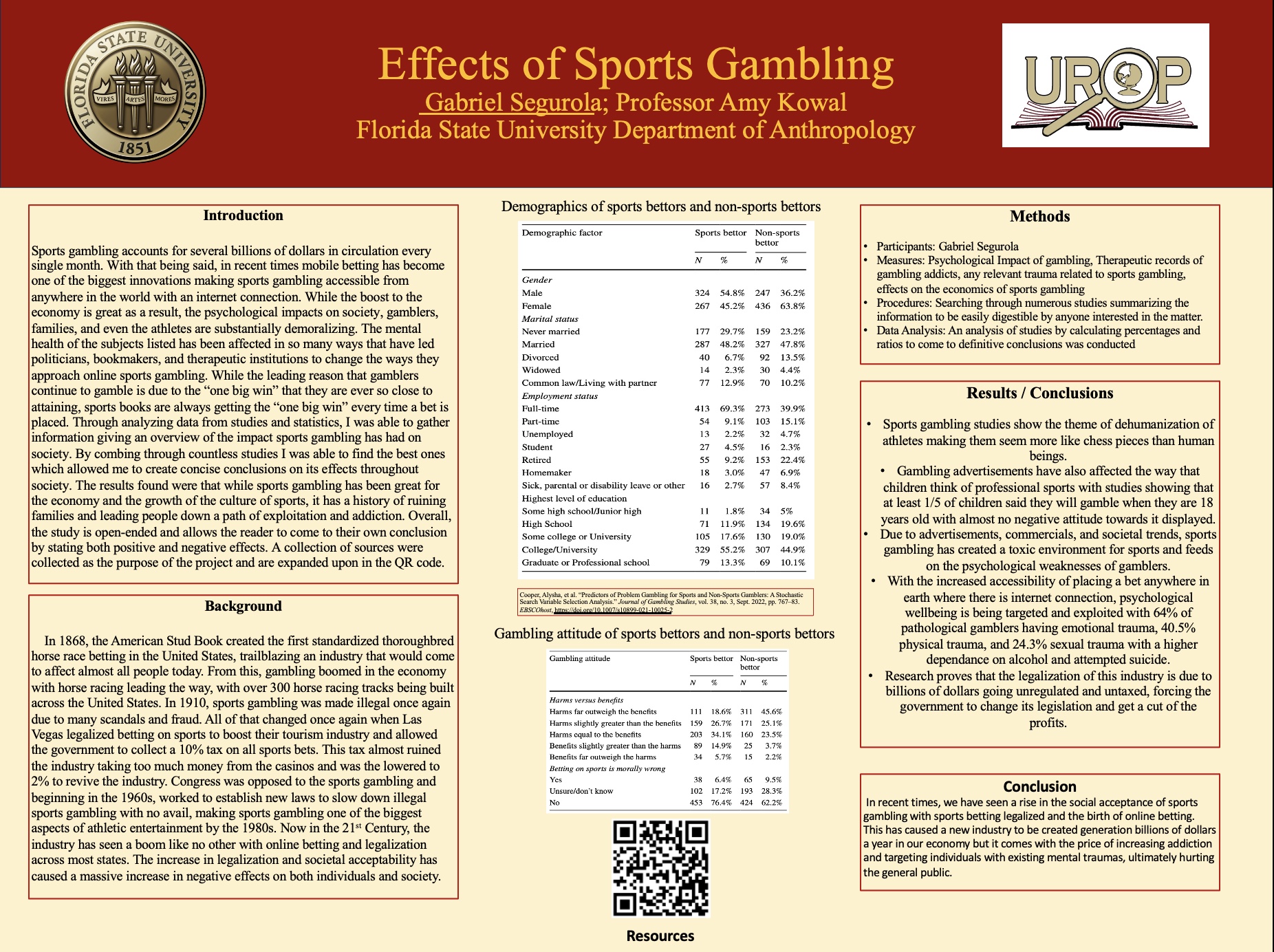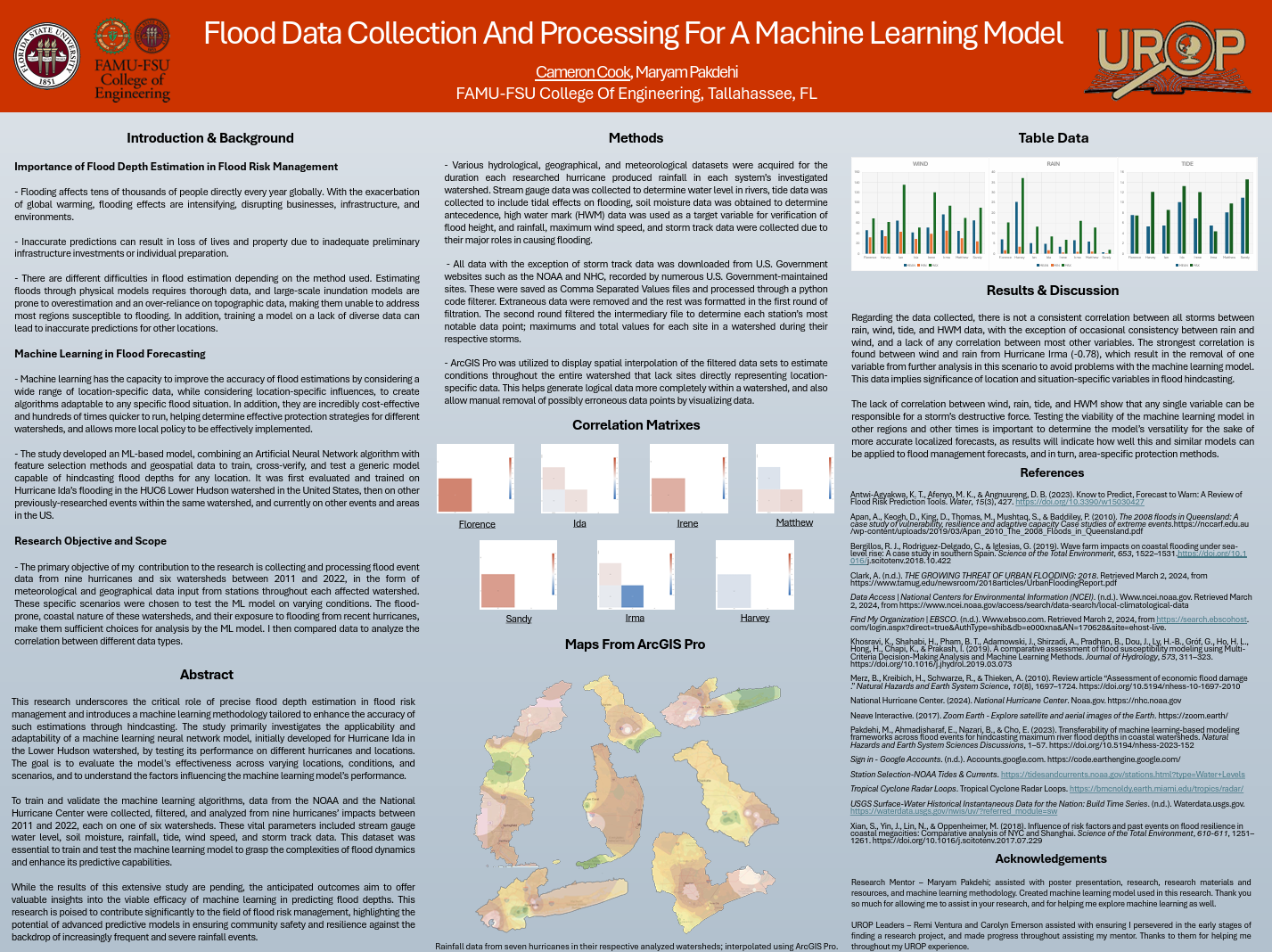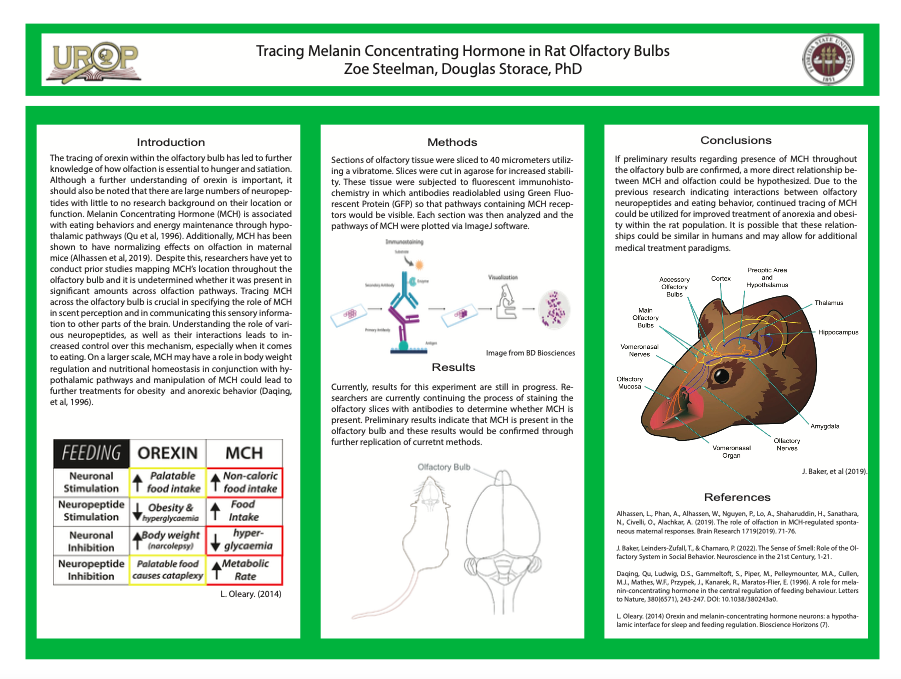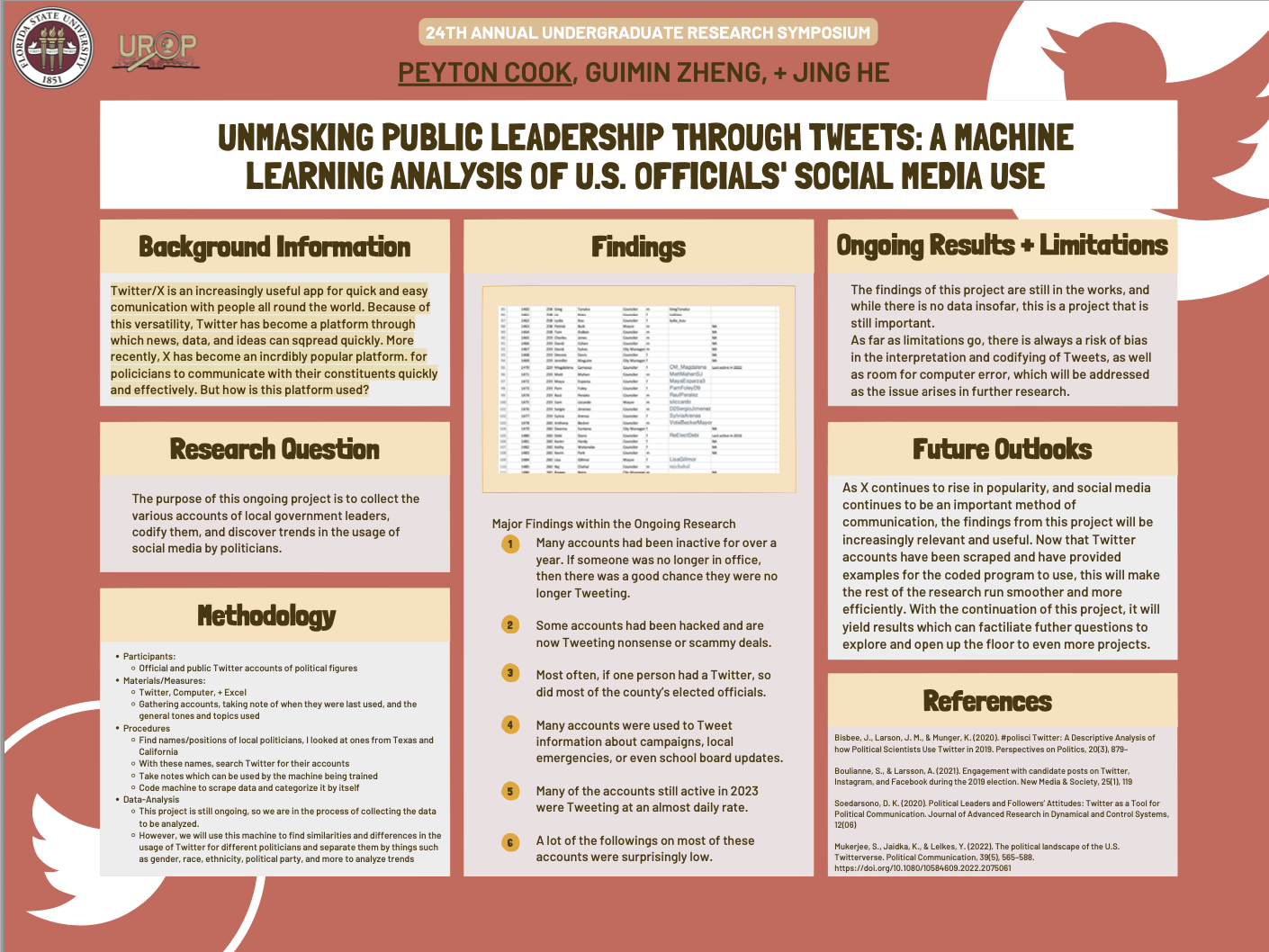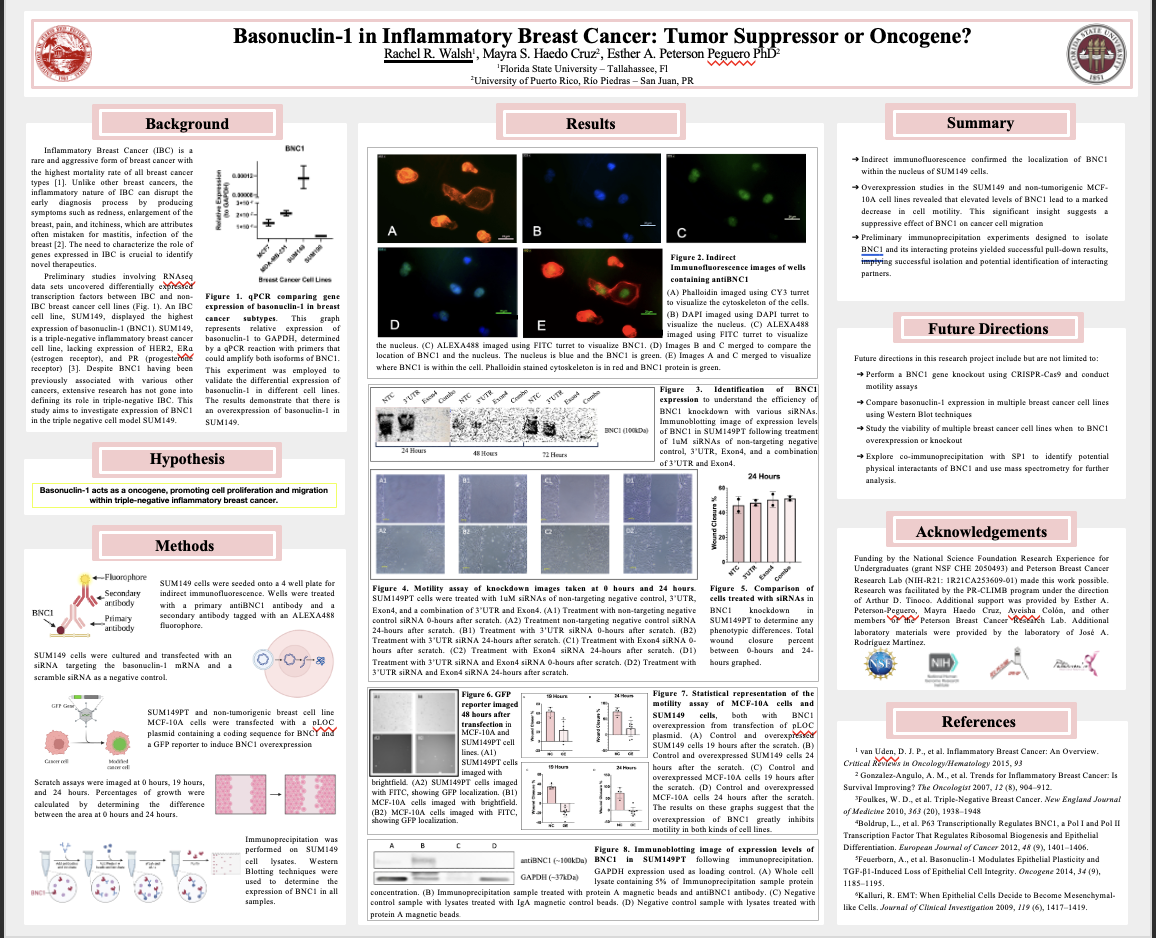Research Symposium
24th annual Undergraduate Research Symposium, April 3, 2024
Pacey Cheesebrough Poster Session 5: 4:00 pm - 5:00 pm/209
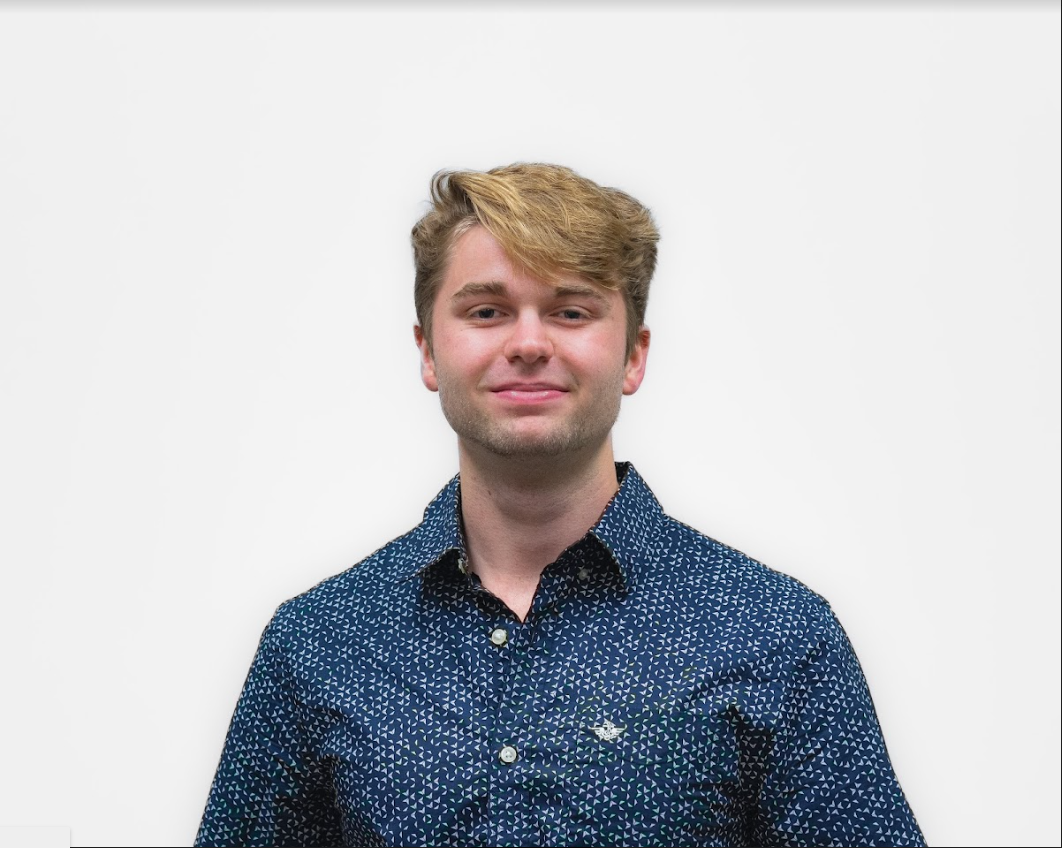
BIO
I am Pacey Cheesebrough, a sophomore undergraduate student at Florida State University majoring in Biological Sciences. After achieving my BA in undergraduate, I plan to pursue higher education in medical school with a focus on emergency care. Ultimately, it is my dream to follow a career path in emergency medicine or research in virology to find treatments for rare diseases.
Estimating environmental heterogeneity between two populations exchanging migrants
Authors: Pacey Cheesebrough, Peter BeerliStudent Major: Biological Sciences
Mentor: Peter Beerli
Mentor's Department: Scientific Computing Mentor's College: Arts and Sciences Co-Presenters:
Abstract
Two populations of the same species can sometimes live in completely different environments. Consequently, these differences can affect the long-term genetic variability of populations’ offspring, visible to us through genetic/genomic data. The software program MIGRATE utilizes DNA-sequenced data to form parameters (i.e. mutation rate) from which to estimate the heterogeneity of these two differing populations. Our aim is to utilize MIGRATE in simulations to test for environmental heterogeneity and its effects on two populations. We use Python scripts to generate DNA sequences which we then use in MIGRATE between two populations in different conditions. We check for environmental constraints or liberties and postulate what these differences are and when they arose.
Keywords: Biology, Scientific Computing, Coding, Phylogenetic Trees
24th annual Undergraduate Research Symposium, April 3, 2024
Christopher Lynch Poster Session 4: 2:45 pm - 3:45 pm/306
BIO
Freshman from Jacksonville, Florida. Currently majoring in Economics with an upcoming dual major in the college of Business. Interested in economic trends, data, and policymaking processes.
Construction of a Historical Infrastructure Price Index
Authors: Christopher Lynch, Dr. Carl KitchensStudent Major: Economics
Mentor: Dr. Carl Kitchens
Mentor's Department: Economics Mentor's College: Social Science and Public Policy Co-Presenters: Ibraheem Saqib Ellahi, Abhik Saha, Eden Sobalvarro, Jesse Valdes
Abstract
This research project aims to develop a comprehensive historical construction price index spanning from the 20th century onwards, recognizing significant shifts influenced by factors such as inflation, technological advancements, and efficiency improvements.
In the early 20th century, the pricing of American infrastructure construction lacked digitization. To address this, microfilms from the Engineering News-Record are digitized through scanning microfilm and processing to make them machine readable. Leveraging microfilm provides access to a historical journal with weekly editions dating back to the 19th century, enabling an examination of prices for various construction elements, job-related salaries, and awarded contracts. After processing the aggregate microfilm data, images are corrected for transcription errors, and weights are assigned to individual projects. The organized aggregate data is then categorized at the city-year-infrastructure type level.
The extraction process employs text parsing and image formatting techniques to unveil relevant construction pricing information. This involves identifying monthly awarded construction contracts based on regional parameters. Specifically, machine learning methods, including Amazon Textract and Python data scraping syntax, are utilized to efficiently extract construction pricing from thousands of pages at a time.
The findings from this project hold the potential to assist policymakers and those involved in constructing new buildings in estimating potential costs. By identifying trends among historical decisions, this information contributes to more informed decision-making regarding future construction expenses.
Keywords: Historical Price Index, Economics, Data
24th annual Undergraduate Research Symposium, April 3, 2024
IsaBella Howell Poster Session 3: 1:30 pm - 2:30 pm /453
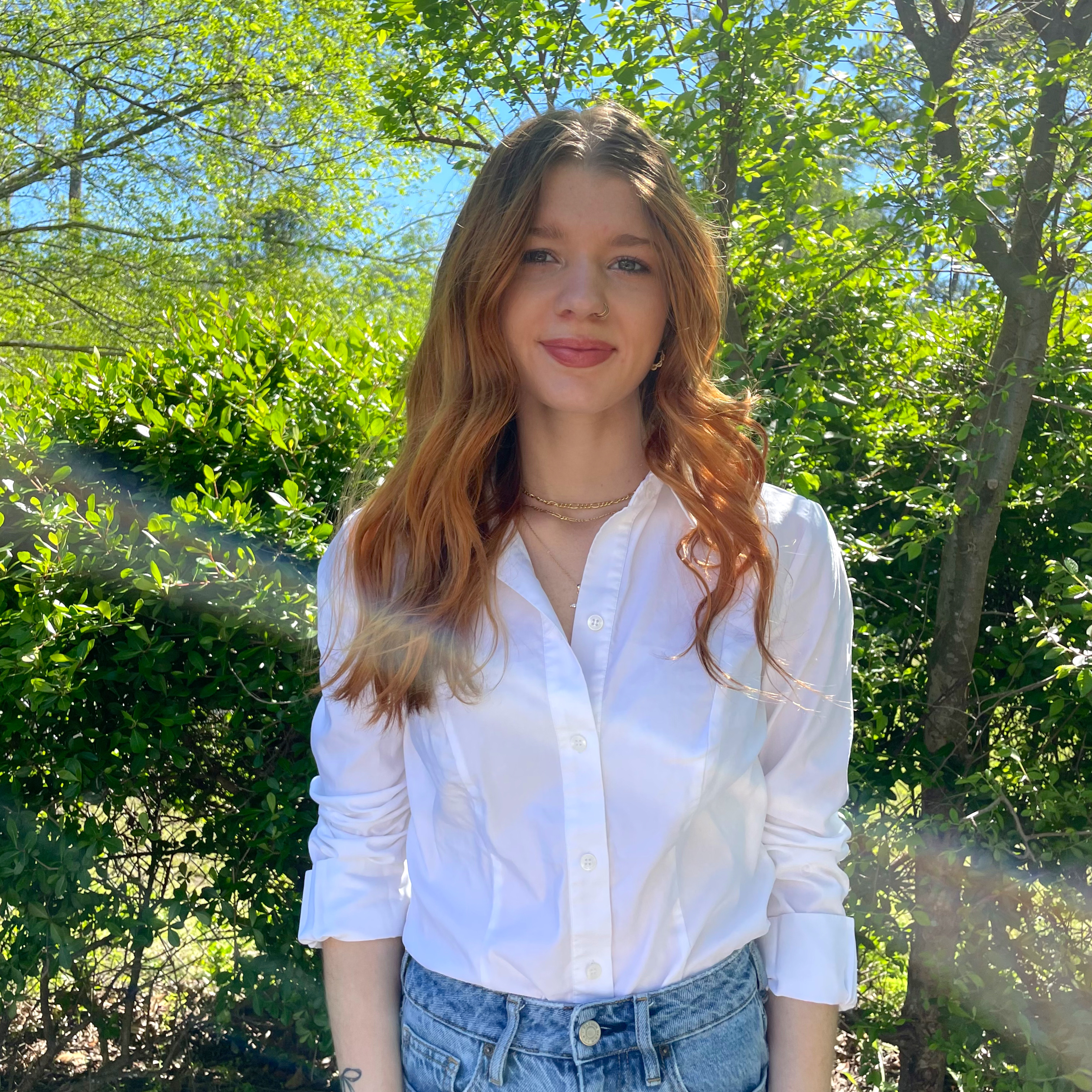
BIO
Hi! I am from Brevard County Florida and am studying both Criminology and Psychology at Florida State University. I hope to gain more experience in research during my undergrad.
The Consequences and Impacts of Hate Crime and Post-Victimization Experiences
Authors: IsaBella Howell, Brendan LantzStudent Major: Criminology, Psychology
Mentor: Brendan Lantz
Mentor's Department: Director of Hate Crime Research and Policy Institute Mentor's College: College of Criminology and Criminal Justice Co-Presenters:
Abstract
The growing need to understand the experiences of hate crime victims in America has been reflected by the growing body of research centered around this premise. Such research has made transparent the association between hate crime victimization and a range of potential negative mental and physical outcomes. Yet, while prior research has been highly impactful to advancing knowledge in this field, our understanding of the experiences of hate crime victims in America has been solely correlational. Therefore, our research team has been seeking to address the gap in research by assessing within-individual change using repeated measures over time. The current study involves collecting and examining the first wave of pilot data from this study, named the Longitudinal Hate Crime Victimization Survey (LHCVS). Analysis of this initial data is critical to the two-wave design of this study, which is critical for the intention of examining and documenting within-person variation and providing sufficient evidence of change. This will also be used to address and assess the relationship between outgroup attitudes, ingroup identification, and help-seeking patterns among individuals who experience hate crime victimization. For example, in this initial data sample 20% of victims reported to police, from which 8% assumed police would be bias and 18% reported they thought police would be ineffective. Further advancing this research is critical to the ability of empirically examining; 1) repeat victim patterns, 2) how prior victimization, might impact future outcomes, 3) ways in which differential post-victim experiences might structure responses to future victimization.
Keywords: Hate-Crime, Victimization, Criminology
24th annual Undergraduate Research Symposium, April 3, 2024
Ryan Wasserman Poster Session 1: 9:30 am - 10:30 am /168
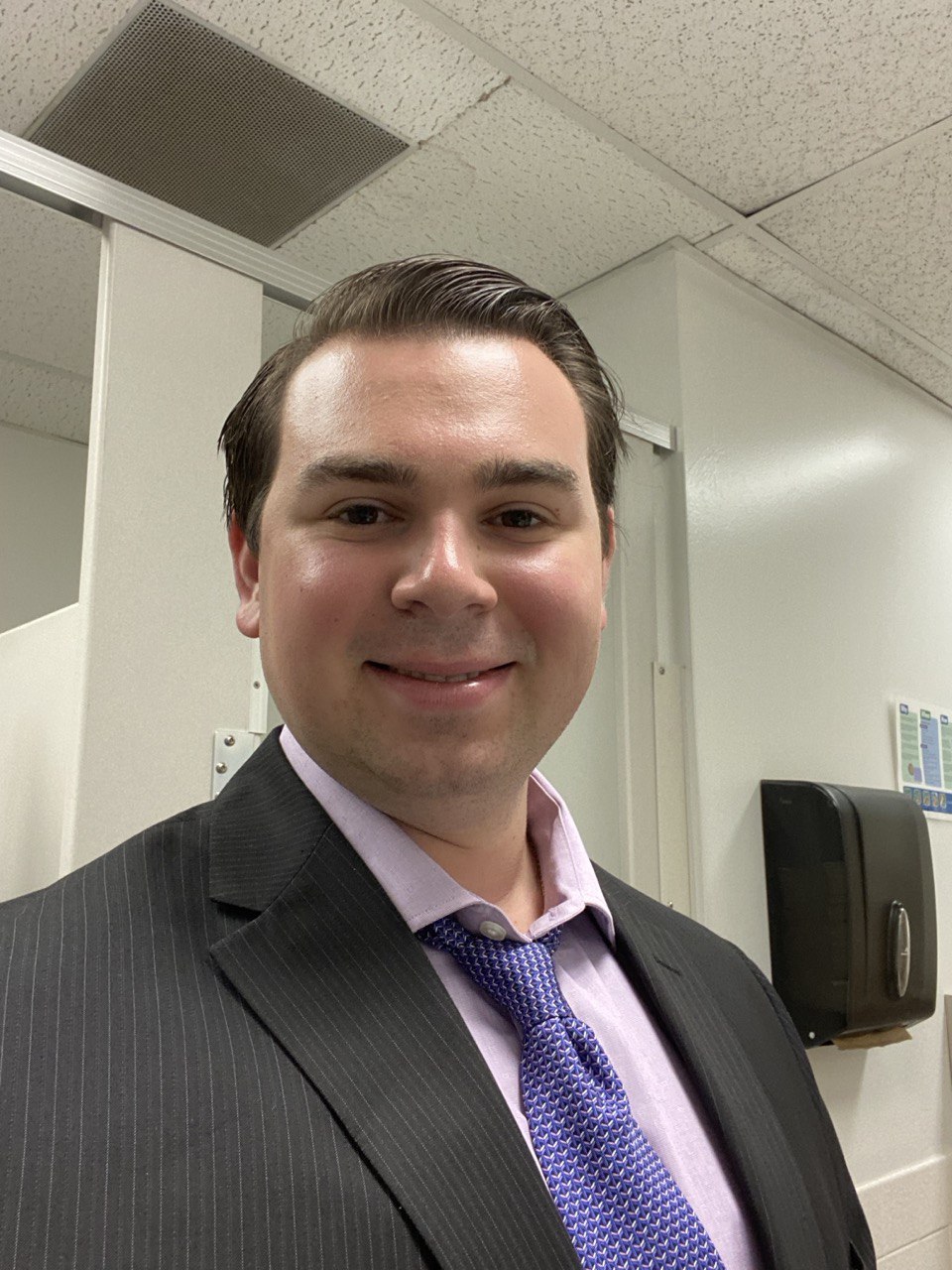
BIO
Hailing from the beach in Sarasota, Florida, I am a pre-med psychology student in my 4th but not final year here at FSU. I am an avid VR user and have a specific interest in the use of VR in diagnosing and managing mental disorders, particularly in seniors. I am passionate about the coming importance of VR, perhaps too passionate at times, and if you'd like to ask I'd happily talk your head off about it.
Influence of Familiarization With IVR on Presence Over Time
Authors: Ryan Wasserman, Andrew DilanchianStudent Major: Psychology
Mentor: Andrew Dilanchian
Mentor's Department: Research Mentor's College: Psychology Co-Presenters: Timothy Barbara, Eden Cisneros
Abstract
IVR is used in a variety of applications from psychological treatments to learning and pain management (Carl et al., 2018; Makransky and Petersen, 2021; Brown et al., 2022) Across several domains, IVR appears to be a promising emerging tool to support the health, wellbeing and quality of life of a variety of healthy and non-healthy populations. (Barreda-Angeles and Hartmann, 2022; Brown et al., 2022) Presence is posited to be a fundamental mechanism through which IVR exerts its effects, affecting enjoyment, attitudes, behavior, treatment responses, and learning outcomes. (Yang and Zhang, 2022; Weech et al., 2019; Barreda-Angeles and Hartmann, 2022; Makransky and Petersen, 2021) Factors of presence have been investigated; however, no longitudinal studies of presence have been done.
Keywords: Virtual Reality, VR, Psychology, Presence, Seniors, Technology
24th annual Undergraduate Research Symposium, April 3, 2024
Alejandra Portal Poster Session 3: 1:30 pm - 2:30 pm/78
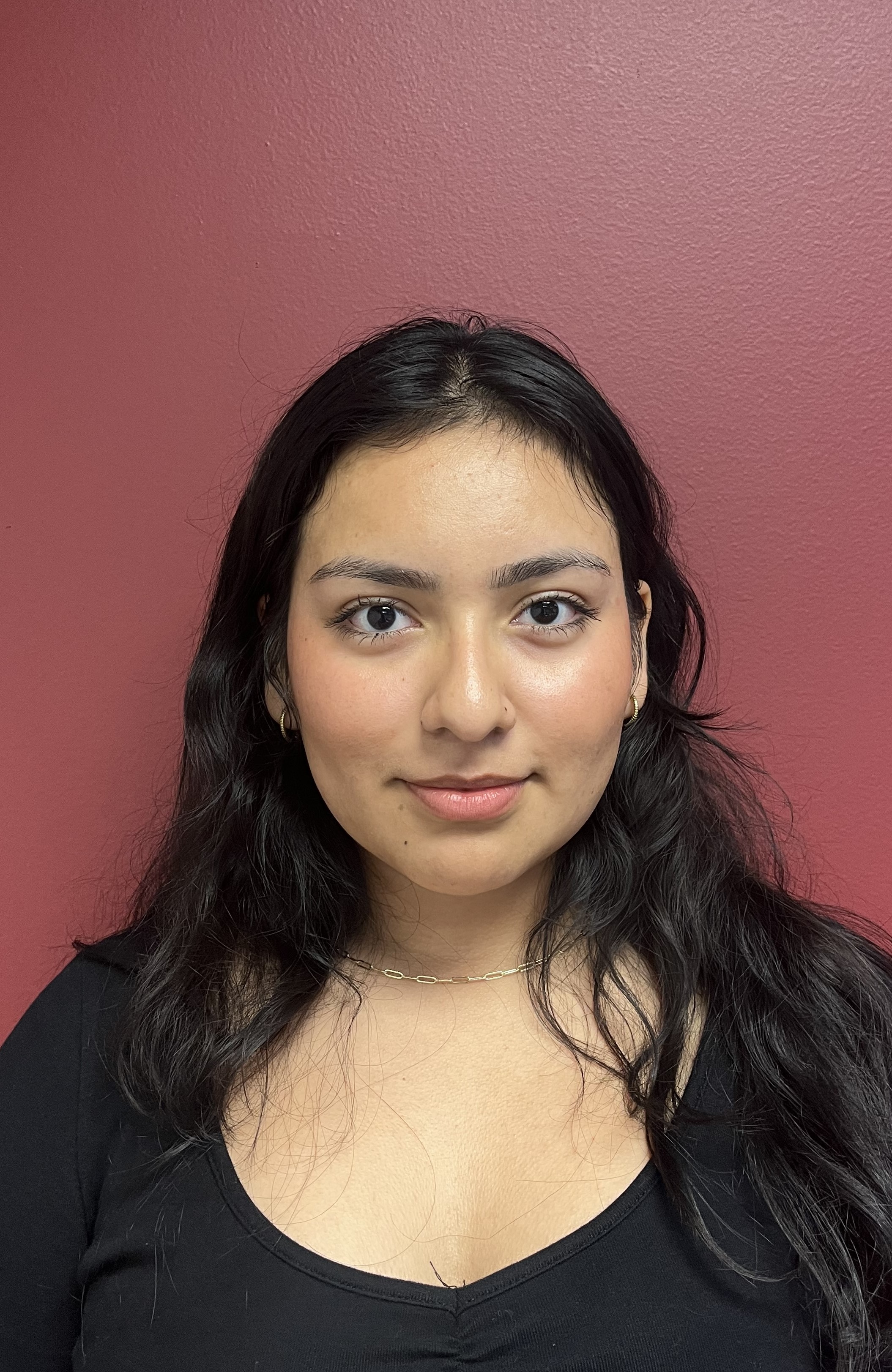
BIO
I am a first-year student from Fort Lauderdale, Florida and I am in the pre-medical track as a Behavioral Neuroscience major.
Representation of Women in Female-Directed Bollywood Films
Authors: Alejandra Portal, Rebecca PetersStudent Major: Behavioral Neuroscience
Mentor: Rebecca Peters
Mentor's Department: Religion Mentor's College: Department of Religion Co-Presenters: Alyzon Mizanin
Abstract
Cinema is a medium through which culture is reflected, ideas are shared, and global perspectives are embraced. Bollywood — a portmanteau of Hollywood and the Indian city “Bombay” — effortlessly embodies this principle; very little rivals Bollywood’s cultural influence on South Asia at large. Within Bollywood’s cultural repository, however, exists longstanding patriarchal traditions that contemporary Indian female directors are seeking to dismantle. These women’s fresh perspectives and personal connections to female representation allow them to utilize their art to bridge the gap between centuries’ worth of gender-based discrimination and more modern steps being taken toward deconstructing inequitable representation.
Keywords: Female Movies Feminism
24th annual Undergraduate Research Symposium, April 3, 2024
Sofia Marckioli Poster Session 4: 2:45 pm - 3:45 pm /455
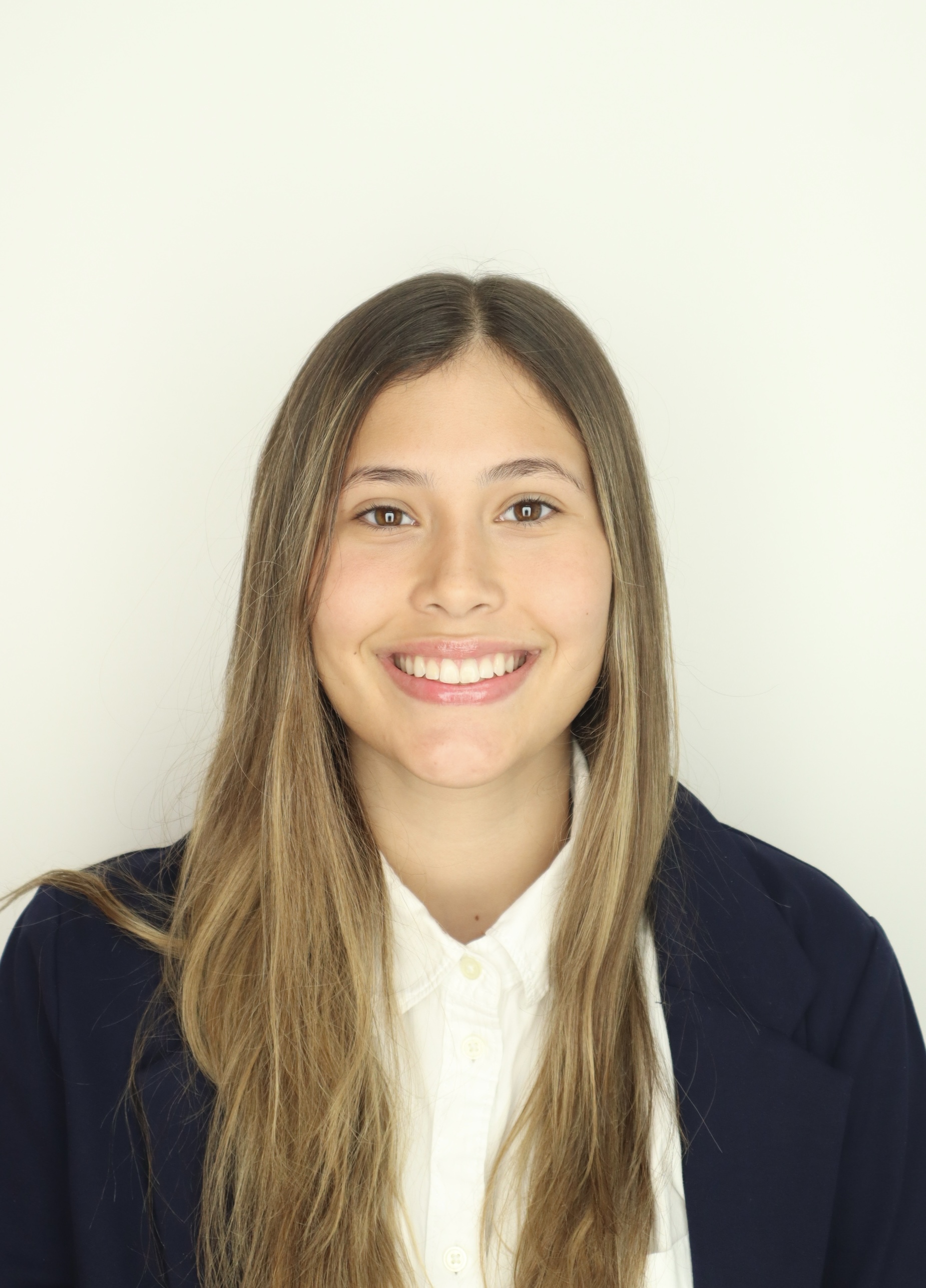
BIO
Hi, I'm Sofia Marckioli, a sophomore from Miami, Florida. My research focuses on spatial navigation skills in vascular dementia. Ultimately, I hope to become a general dentist. I hope to combine medical expertise with a focus on oral health to enhance overall well-being.
Spatial Navigation Skills in Vascular Dementia- A Meta Analysis
Authors: Sofia Marckioli, Dorota KossowskhanStudent Major: Clinical Professions
Mentor: Dorota Kossowskhan
Mentor's Department: Arts & Sciences Mentor's College: College of Psychology, Arts & Sciences Co-Presenters: Amelia Bush
Abstract
Dementia poses significant challenges for individuals and societies alike. Accounting for approximately 20% of dementia cases, vascular dementia (VaD) emerges from compromised brain blood supply due to vascular issues, making it the second most prevalent cause of dementia (Pendlebury & Rothwell, 2019; American Stroke Association, 2021). Spatial disorientation is among the earliest indicators of dementia, prompting an exploration of spatial navigation abilities to better understand the cognitive decline associated with VaD. Early diagnosis plays a pivotal role, enabling timely intervention, particularly in the management of vascular risk factors like hypertension.
Keywords: Dementia, Spatial, Navigation
24th annual Undergraduate Research Symposium, April 3, 2024
Faith Collins Poster Session 5: 4:00 pm - 5:00 pm/35
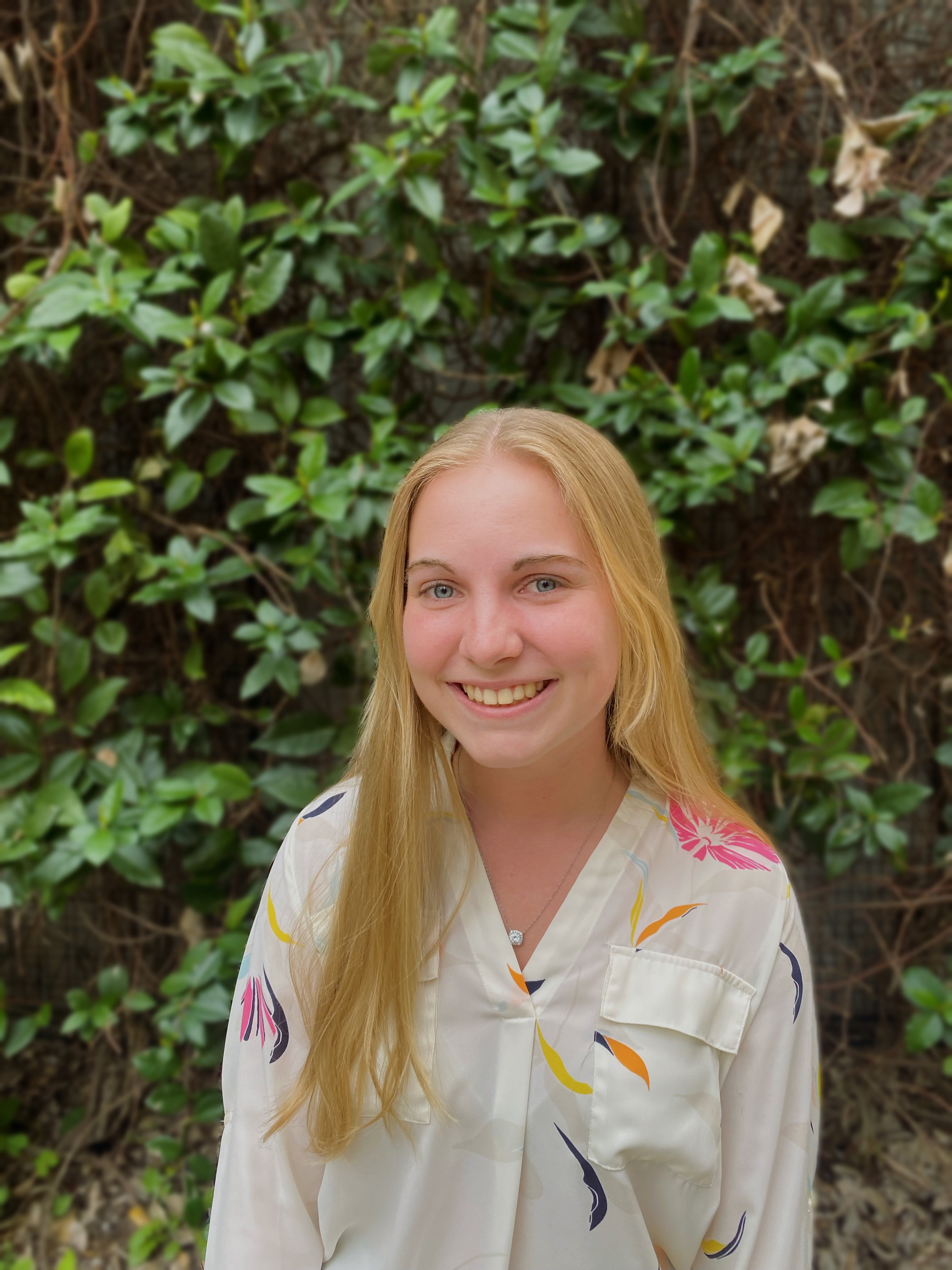
BIO
My name is Faith Collins, and I am a first-year student from Melbourne, FL. I am currently studying Communication Science and Disorders and plan on going to graduate school to become a speech-language pathologist. I hope to have more research experiences prior to this adventure in order to explore possible career specializations, as there are so many opportunities in this field. In the future, I am interested in researching swallowing disorders and dysarthria, as well as the barriers to speech therapy services experienced by military families.
Analysis of Teachers’ Language Input Using Morpholex
Authors: Faith Collins, Ms. Audrey HendrixStudent Major: Communication Science and Disorders
Mentor: Ms. Audrey Hendrix
Mentor's Department: Communication Science and Disorders Mentor's College: College of Communication Science and Disorders Co-Presenters:
Abstract
Morphological complexity (MC) describes the intricacy with which words are formed using meaningful parts, or morphemes, such as prefixes and suffixes when added to base words. Conversational language usually has low MC with a high frequency of grammatical markers or inflectional morphemes (i.e. -s, -ed). Academic language, which is often encountered in educational settings and therefore is important for students’ success, has higher MC due to a greater frequency of derivational morphemes (i.e., -ly, -ism) which contributes to the complexity of academic words (Zhang et al., 2020). Extensive research describes the role of robust adult language input in children’s conversational language development. However, few research studies have examined the MC of teachers’ instructional language and its implications in academic language development. This study will investigate two research questions: (a) What types and frequencies of derivational morphemes occur in teachers’ instructional dialogues? and (b) Do morpheme types and frequencies differ by instructional subject?
This study analyzes 15-minute transcripts (n ~1500) of second-grade teachers’ (n =40) instructional dialogues using Morpholex (Cobb, 2023; Laufer & Cobb, 2020), an online affix profiler that interprets MC in written samples. MC will be described throughout the sample and compared across four instructional subjects (English, math, science, and social science).
Preliminary results suggest that inflectional morphemes have a high-frequency sample wide while certain types of derivational morphemes may occur more frequently in certain subjects. The findings may motivate further research on the effects of informing teachers about enriching their speech to promote academic language development in children.
Keywords: Morphology, Teacher Instruction, Speech Pathology
24th annual Undergraduate Research Symposium, April 3, 2024
Jayson Bakshi Poster Session 5: 4:00 pm - 5:00 pm/300
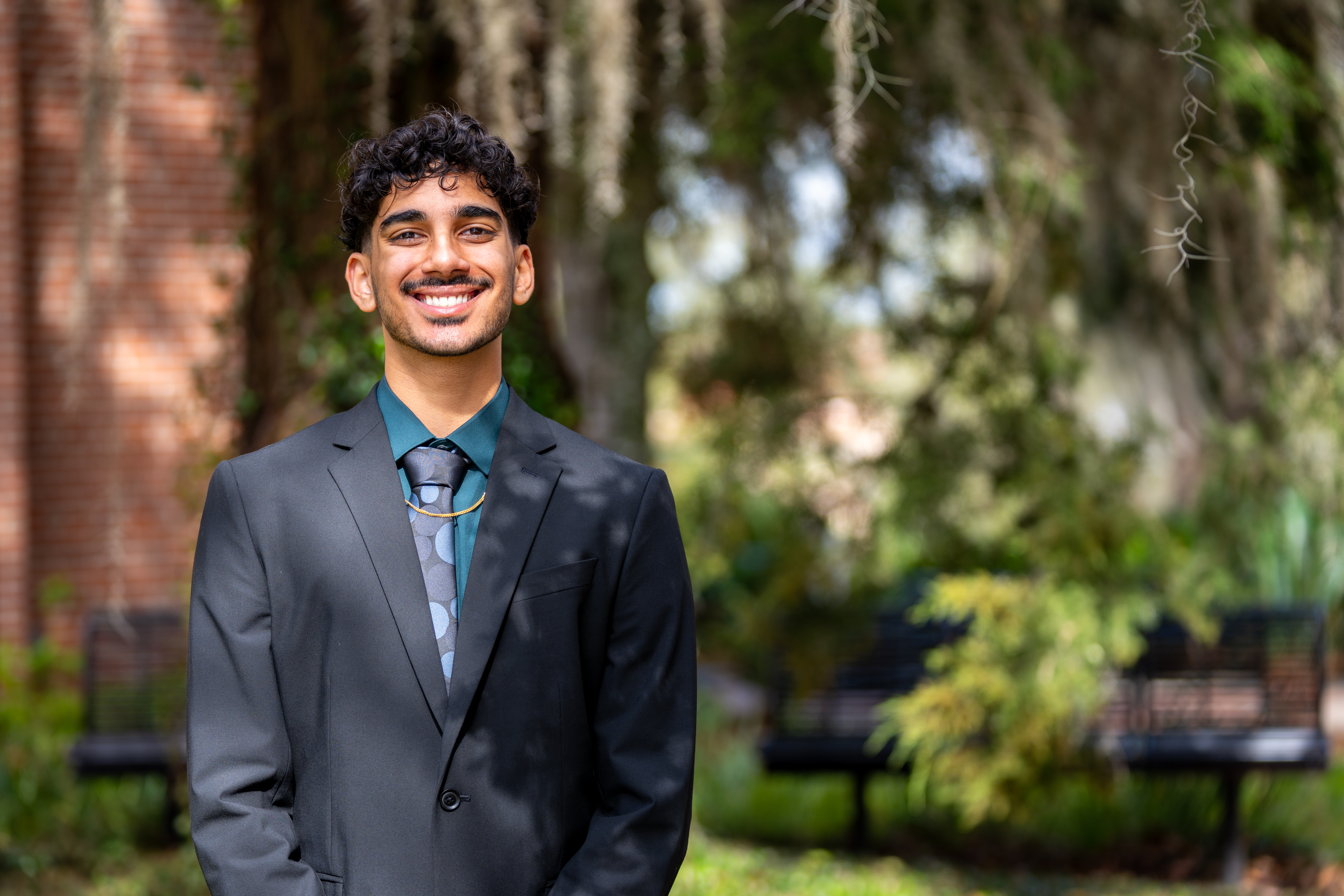
BIO
Hailing from Rochester, NY, Jayson Bakshi is a dedicated individual with an aspiration to make a profound difference in the world. Aspiring to become a pediatric physician, Jayson is driven by a compassionate mission to provide medical care to underprivileged children in urban areas across the United States and around the globe. With a solid foundation in the medical field, he has spent the past two years working as a pediatric medical assistant, gaining invaluable experience and insights into pediatric care. His commitment to his future profession is further demonstrated through his volunteer work in hospitals, where he has contributed significantly to the well-being of a diverse array of patients.
Jayson plans to attend medical school beginning in the Fall of 2025. Beyond his professional pursuits, Jayson is an avid sports enthusiast with a particular fondness for the Lakers. He enjoys staying active by playing football and basketball and also listening to diverse arrays of music.
Preliminary Evaluation of the African American Alzheimer's Caregiver Training and Support Project 2 (ACTS2) Facebook Live Workshop Series: A Mixed Methods Analysis
Authors: Jayson Bakshi, Robert L. GlueckaufStudent Major: Cell and Molecular Neuroscience
Mentor: Robert L. Glueckauf
Mentor's Department: Department of Behavioral Sciences and Social Medicine Mentor's College: College of Medicine Co-Presenters: Amar Patel, Marin Savage-Paik
Abstract
The African-American Alzheimer’s Caregiver Training and Support Project 2 (ACTS2) is a faith-integrated, skills-training and support program for Black family caregivers of persons living with dementia in Florida. In response to the COVID-19 pandemic, ACTS2 initiated a bi-monthly Facebook Live Workshop series, offering practical information and resources for Black communities on dementia caregiving topics. Using mixed assessment methods, we evaluated viewer reach, engagement, and satisfaction with the workshop series. We used quantitative (e.g., online pre-registrations) and qualitative data (e.g., online evaluation surveys) to evaluate viewer reach, engagement, and satisfaction with 22 ACTS2 workshops, delivered from May 2020 to August 2023. The series reached a total of 1,193 individuals who pre-registered and at least 1,032 individuals who attended virtual workshops in live time. To date, the series reached at least 9,697 Facebook and 274 YouTube user views. Thematic analysis of attendee engagement revealed three themes: (1) requesting additional information and community resources; (2) attendees disclosing caregiving experiences; and (3) gratitude towards workshop presentations. From the pool of pre-registrants, 98 completed evaluation surveys. Most survey completers reported workshops were “extremely informative” or “very informative” (92.9%) and rated overall quality of workshops as “excellent” or “good” (90.8%). Three themes emerged from survey data: (1) gratitude for workshop presenters’ testimonies; (2) satisfaction with ACTS2 community resources; and (3) centering Black dementia caregiver experiences. Initial findings suggested that the ACTS2 Facebook Live Workshop series was successful in engaging community members across Florida while serving as a useful tool in providing information for Black dementia caregivers.
Keywords: dementia, Alzheimers, caregiver, African-American
24th annual Undergraduate Research Symposium, April 3, 2024
Mattia Reformato-Santoro Poster Session 3: 1:30 pm - 2:30 pm/360

BIO
Mattia is a second-year undergraduate student from Fort Lauderdale, FL. She is double-majoring in Cell & Molecular Neuroscience and Communication Sciences & Disorders with a minor in Chemistry. Mattia is on a pre-medical track with future goals to earn an MD-PhD. As a first-generation student, Mattia strives to excel academically, contribute to scientific research, and provide high-quality services to rural and underserved communities. Under the supervision of Dr. Daniel Machin, she has worked as an undergraduate researcher in his lab, studying cardiovascular physiology and the influence of aging and lifestyle on the development of cardiovascular disease. This role entailed skills such as handling mice, dissections, histology, and genotyping. Aside from her role in the lab, she represents Florida State as a University Ambassador, Learning Assistant, American Medical Women's Association (AMWA) Service Chair, and a vocalist in the FSU Women's Glee Club.
Exploring Arterial Dysfunction in C57BL/6J Mice through Histological Examination
Authors: Mattia Reformato-Santoro, Daniel Machin, Ph.D.Student Major: Cell & Molecular Neuroscience and Communication Sciences & Disorders
Mentor: Daniel Machin, Ph.D.
Mentor's Department: Department of Nutrition and Integrative Physiology Mentor's College: College of Education, Health, and Human Sciences Co-Presenters: Reagan Stern
Abstract
Age- and lifestyle-related changes in the structural and functional properties of arteries contribute to impaired vascular function, elevated blood pressure, and a heightened risk of cardiovascular disease. Despite the well-established benefits of regular exercise and a healthy diet in preventing obesity and promoting heart health, the prevalence of a high salt, high-fat diet, and inadequate physical exercise in the typical American lifestyle contributes to cardiovascular disease. This research focuses on understanding how interventions, specifically exercise and dietary modifications, that have an effect on the restoration of vascular function. For this research, we will be using the C57BL/6J mice, which is an inbred strain that was the first to have their genome completely sequenced. These mice are particularly useful for studying cardiovascular diseases related to aging because they have low bone density, are capable of developing diet-induced obesity, and type 2 diabetes. After dietary exposure, mice were dissected, and their aortas were preserved, sliced, stained, and microscopically analyzed. The histology analysis detailed examination of the differences between the normal chow and western diets. The findings from this study contribute valuable insights into the intricate relationship between diet, exercise, and cardiovascular health. By utilizing the C57BL/6J mouse model, this research enhances our understanding and ultimately paves the way for targeted interventions and preventive strategies in cardiovascular health.
Keywords: C57BL/6J, aorta, arterial dysfunction
24th annual Undergraduate Research Symposium, April 3, 2024
Roberto Gomez Poster Session 4: 2:45 pm - 3:45 pm /438
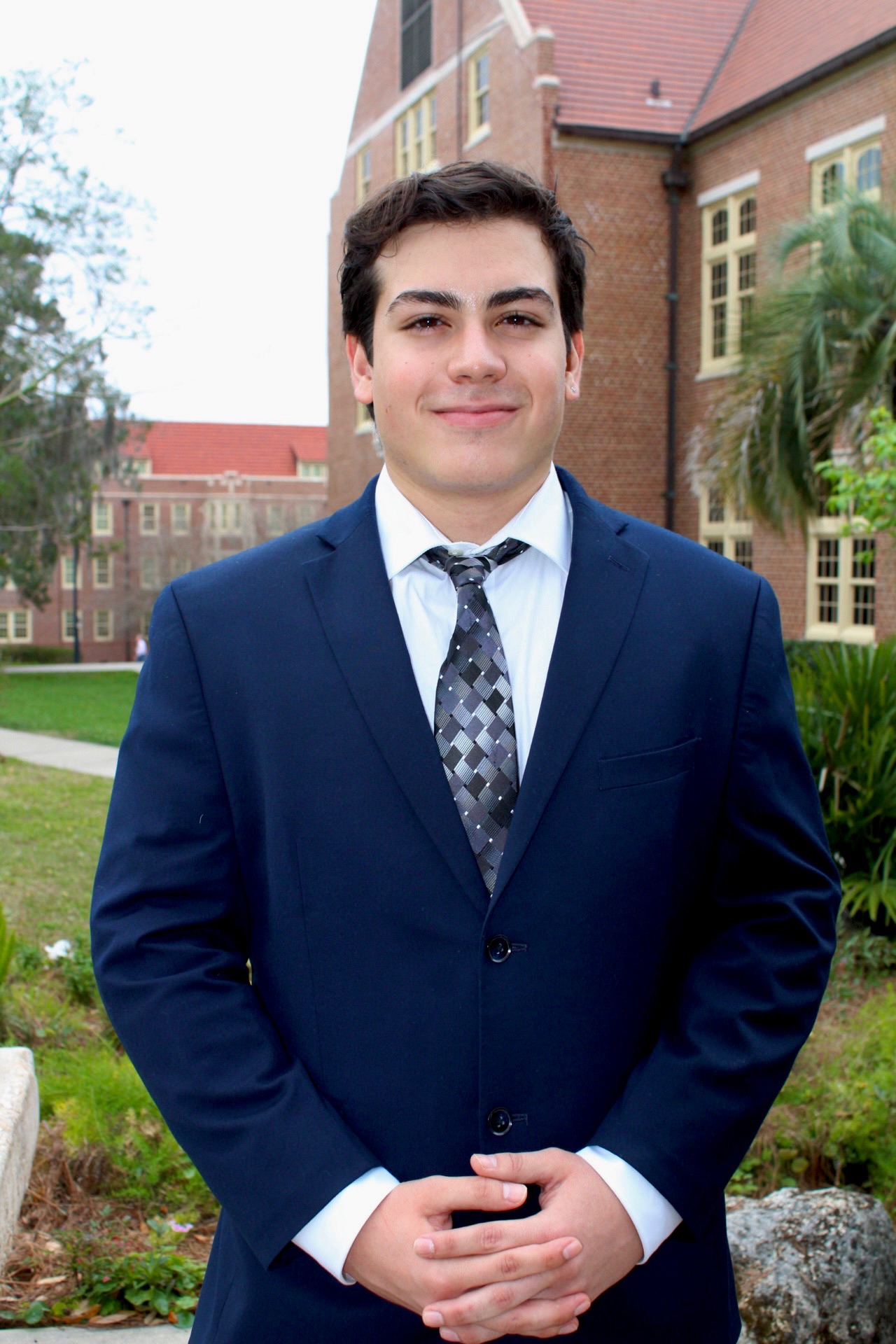
BIO
I am a 3rd year Biology major with an interest in research and a minor in psychology. I am especially interested in molecular and cell biology, along with an interest in psychology and neuroscience. My goals are to one day conduct my own research (either concerning molecular biology, neuroscience, or organic chemistry).
Phylogenetic Analysis of AP Complexes
Authors: Roberto Gomez, Dr. Qian YinStudent Major: Biology
Mentor: Dr. Qian Yin
Mentor's Department: Biological Sciences Mentor's College: Florida State University Co-Presenters: Julia Dennis, Laura Dong, Sofia Andrade
Abstract
Eukaryotic organisms possess compartmentalized, membrane-bound organelles. To transport cargo between and into these compartments, there must be a highly regulated system of proteins that control vesicle formation and movement. Adaptor proteins (APs) function to mediate endocytosis by preparing a clathrin-coated vesicle, which is essential for interaction with the environment and is commonly manipulated by viruses. Many organisms across the eukaryotic phyla share various types of APs. This project analyzes the evolution of AP-1 and AP-2 by constructing phylogenetic trees of each of the four subunits across one hundred different species. Similar research has been done on this subject; however, such work had often studied a larger range of proteins over a smaller range of species. This study will help elucidate the specific conserved genes and mechanisms between species as they evolved over time. These sequences were downloaded and processed through a phylogenetic software program created by the National Institutes of Health. The results are related to similar onsets of AP subunits between species, reflecting a similar common ancestor. By understanding the evolution of APs 1 and 2, and their associated assembly proteins, similar methods could be applied to other members of the AP family, including those which have just been discovered. This leaves a promising future for AP discovery and comparison, as well as further insight into the methodology of uncovering mechanisms of cell survival and disease prevention.
Keywords: Phylogeny, transporter complexes, genes
24th annual Undergraduate Research Symposium, April 3, 2024
Jacob Rampino Poster Session 3: 1:30 pm - 2:30 pm /210
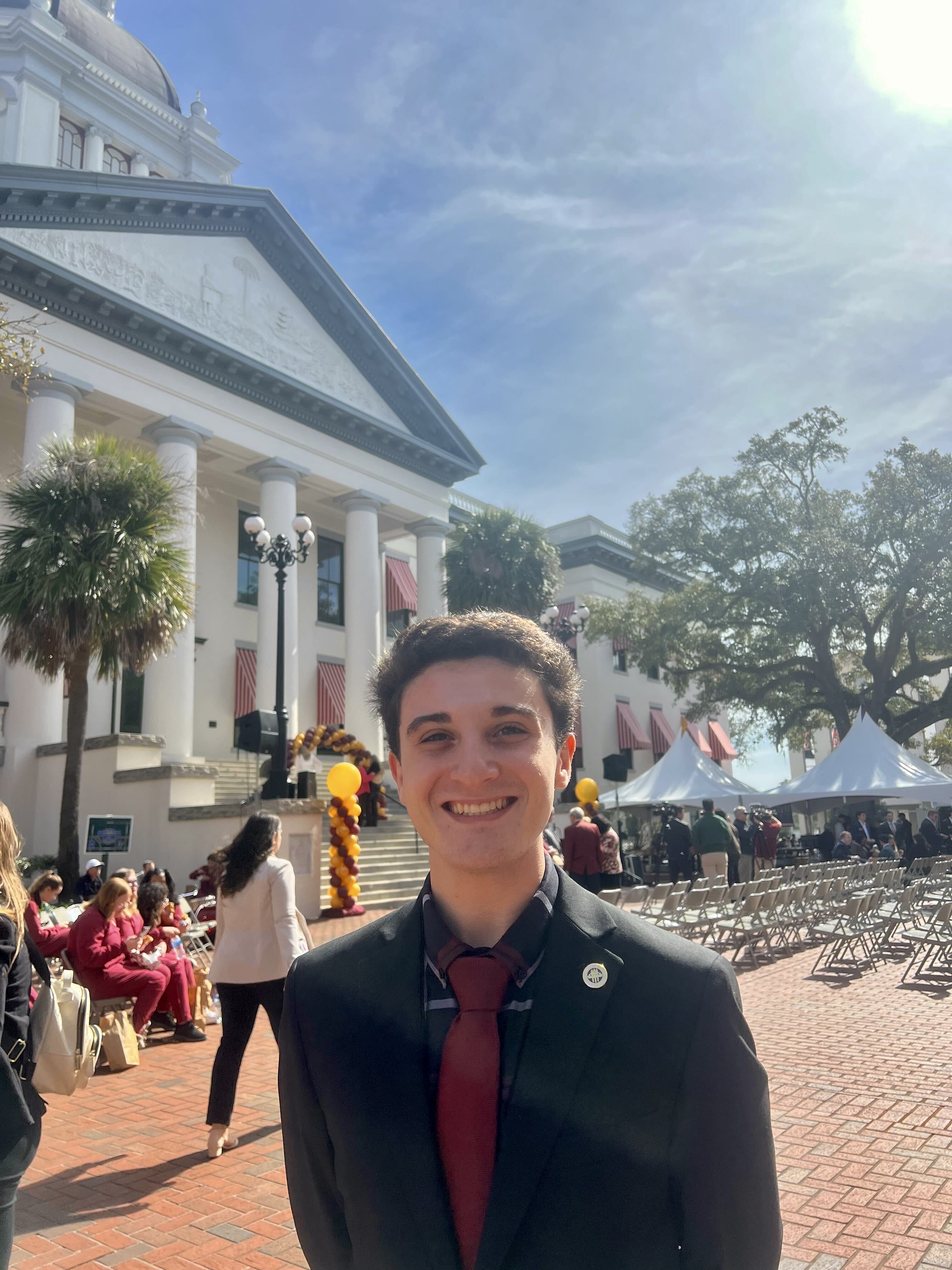
BIO
I'm a second-year political science and history student at FSU, and hope to pursue a career in journalism. My current involvements outside of UROP include advocating for students experiencing hunger and homelessness with FSU PIRG, writing articles on international affairs for the Political Review at FSU, and helping administer elections for Student Government as Deputy Supervisor.
Measuring and Analyzing Media Bias from Text
Authors: Jacob Rampino, Yimeng LiStudent Major: Political Science & History
Mentor: Yimeng Li
Mentor's Department: Political Science Mentor's College: Social Science and Public Policy Co-Presenters: Courtney Boutilier
Abstract
Partisan bias infiltrates the media in ways that can affect political behavior. In this research, we analyze political news articles from six media organizations: CNN, Fox News, New York Times, Wall Street Journal, HuffPost, and Breitbart. We measure article-level ideological leaning by comparing the text of the news articles to that of congressional speeches. This research further analyzes partisan bias in news article text by examining two choices made by newsmakers: which events to cover and how to cover them. Combining manual coding of news articles from several major media outlets and statistical analyses, we determine whether they cover the same issues and whether they relay them similarly or in different ways. The ideological leanings of each major media organization can be due to structural differences, but they can also be accentuated by presentation bias. Some of the common strategies used to portray bias through text are selective coverage and framing, which exacerbate polarization and lead readers to seek out media that shares their pre-existing political views. The exposure of voters to partisan bias in news coverage has implications for political discourse. Our research allows us to understand the coverage of political events by media organizations and how they manifest into partisan bias.
Keywords: Media, Bias, News
24th annual Undergraduate Research Symposium, April 3, 2024
Maria Serna Poster Session 4: 2:45 pm - 3:45 pm /82

BIO
I am a Colombian student currently attending FSU seeking a degree in biology; I plan to attend medical school to become a psychiatrist. I have faced a multitude of challenges as I adjust to living in America, many of which I would have never overcome if not for my loved ones and dreams pushing me forward. My main academic interests lie in public health, microbiology, and human behavior. My main philosophy in life is to maintain an open mind. As Martha Stewart says, "Without an open-minded mind, you can never be a great success."
Framing COVID-19 Vaccine Hesitancy
Authors: Maria Serna, Jeonghwa YangStudent Major: Biology
Mentor: Jeonghwa Yang
Mentor's Department: Public Administration Mentor's College: Florida State University's Askew School of Public Administration Co-Presenters:
Abstract
COVID-19 is a respiratory sickness caused by the SARS-CoV-2 virus. In 2020, the virus grew into a pandemic, and a vaccine for the virus first became available in December 2020. However, with the vaccine came a notable rise in vaccine hesitancy and anti-vaccine sentiments that limited the uptake of the vaccine in many groups. At its peak, COVID-19 vaccine hesitancy was prevalent in certain areas and demographics, and several factors were identified as contributors to the lack of vaccine uptake. By looking at how academia and mass media framed the COVID-19 vaccine and by comparing the outside perspective of “defined” social equity with the reality of the individuals experiencing vaccine hesitancy, we hope to determine how public media and “views from above” influenced perspectives of and vaccine uptake for “views from below." To accurately analyze mass media and sources that may have influenced public perspectives on the vaccine and those experiencing hesitancy, archival sources from CNN, FOX, The New York Times, and NPR 2020 were analyzed. Collected data focused on specific groups who had lower vaccine uptake, vaccine hesitancy, and the general “above” perspective on the “below” subjects. The collected data provided several causes behind vaccine hesitancy in the United States, including misinformation, lack of vaccine education and availability, varying social capital in different areas, and individual experiences. Further analyses are continuing. However, these findings suggest that improved vaccine education techniques and accessibility, as well as increased outreach and representation, may help decrease future vaccine hesitancy.
Keywords: Covid-19 Vaccine, Vaccine Hesitancy, Public health, Minorities
24th annual Undergraduate Research Symposium, April 3, 2024
Laura Dong Poster Session 5: 4:00 pm - 5:00 pm/438
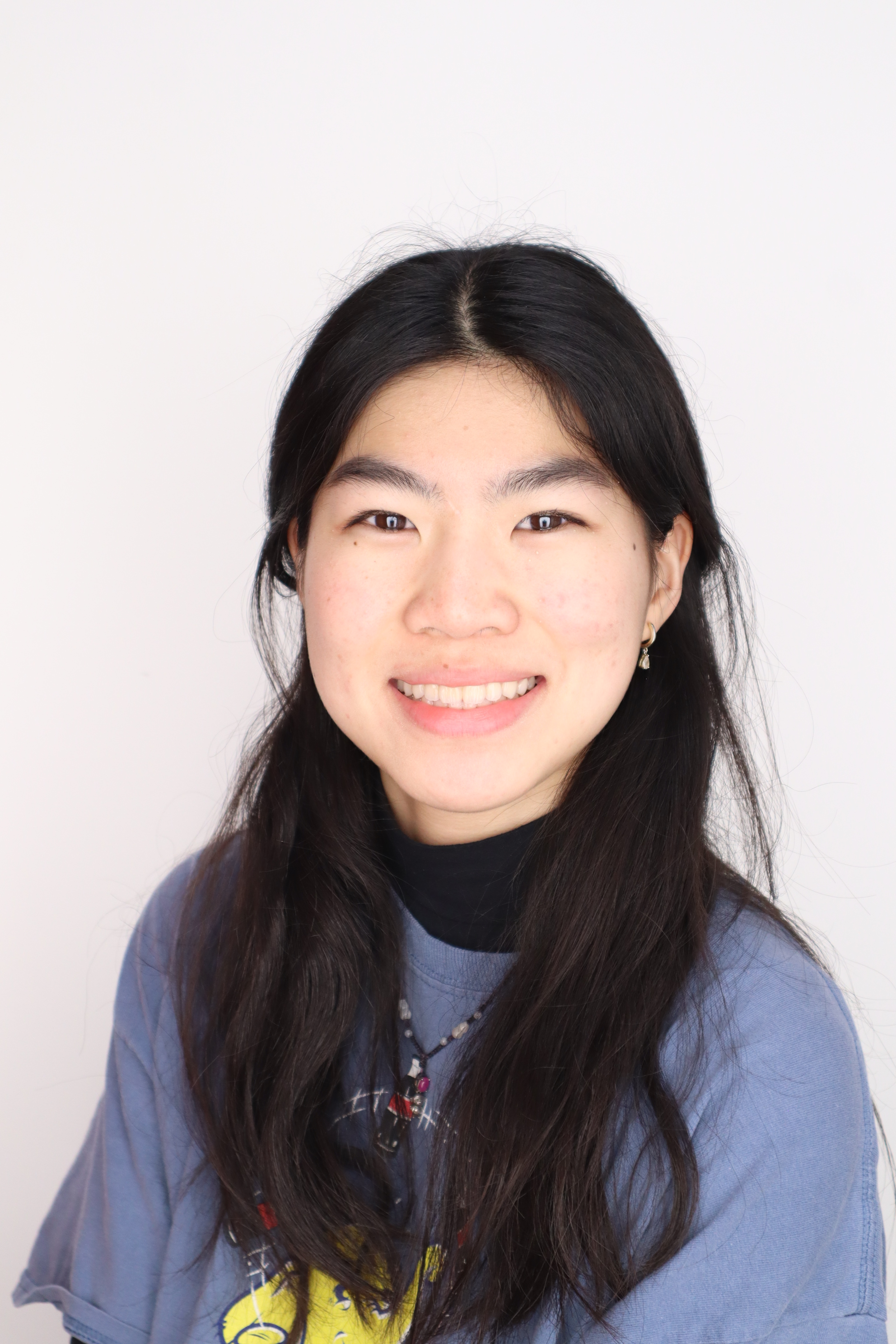
BIO
I’m proudly a member of the WIMSE LLC here at FSU, which has been so supportive of my aspirations of doing research. After I graduate in spring 2026, I hope to pursue a masters to continue my studies.
Phylogenetic Analysis of AP Complexes
Authors: Laura Dong, Qian YinStudent Major: Computational Biology
Mentor: Qian Yin
Mentor's Department: Biological Sciences Mentor's College: Arts and Sciences Co-Presenters: Julia Dennis, Sofia Andrade, Roberto Gomez
Abstract
In order to traffic proteins and other cellular cargo, a packaging system must be assembled to do so. Adaptor proteins (APs) function to mediate endocytosis by preparing a clathrin-coated vesicle, which is essential for cellular interaction with its environment and is manipulated in common mechanisms of viral infection. Many organisms across the various eukaryotic phyla share various types of APs. This project is analyzing the evolution of AP-1 and AP-2 by constructing phylogenetic trees of each of the four subunits across one hundred different species. Similar work has been done on this subject, however, such work often studied a larger range of proteins over a smaller range of species. This study will help elucidate the various conserved genes and mechanisms between species as they evolved over time. Various proteomic databases were consulted, including but not limited to UniProt and BLAST. These sequences were downloaded and processed through a phylogenetic software program created by the National Institutes of Health. The results are related to similar onsets of AP subunits between similar species, reflecting a similar common ancestor. By elucidating the evolution of APs 1 and 2, and their associated assembly proteins, similar methods could be applied to other members of the AP family, including those which have just been discovered. This leaves a promising future for AP discovery and comparison, as well as another insight into the methodology of uncovering mechanisms of cell survival and disease prevention.
Keywords: Phylogeny, AP Complexes, Subunits
24th annual Undergraduate Research Symposium, April 3, 2024
Rin Sangar Poster Session 3: 1:30 pm - 2:30 pm /51
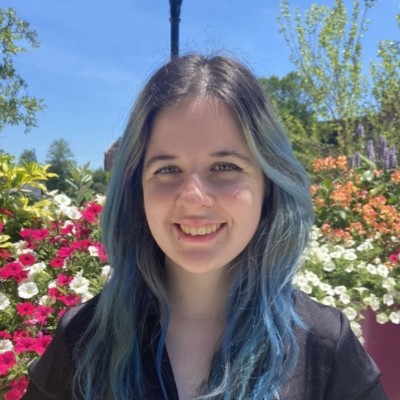
BIO
I am a third year psychology major with an interest in clinical research and the impacts it has on individuals. I believe that gaining a greater understanding of the causes and effects of psychological disorders is the first step to helping those affected. My career goal is to go into either research or education, and to continue contribution to the field I am so passionate about.
Spatial Navigation Skills In Mild Cognitive Impairment(MCI) and Alzheimer's Disease (AD) – A Meta-Analysis
Authors: Rin Sangar, Dorota Kossowa-KuhnStudent Major: Psychology
Mentor: Dorota Kossowa-Kuhn
Mentor's Department: Psychology Mentor's College: Arts and Sciences Co-Presenters: Adria Morales Santiago
Abstract
Spatial navigation deficit is an early marker of Alzheimer’s Disease and Mild Cognitive Impairment, and can be identified as a precursor to more severe neural impairment. By analysing the performance of older adults in spatial navigation tasks, it is possible to determine the severity of the impairment as well as the correlation their performance has with their neurological diagnosis.
Keywords: Alzheimer's, MCI, meta-analysis, spatial navigation
24th annual Undergraduate Research Symposium, April 3, 2024
Tynan Smith Poster Session 3: 1:30 pm - 2:30 pm /195
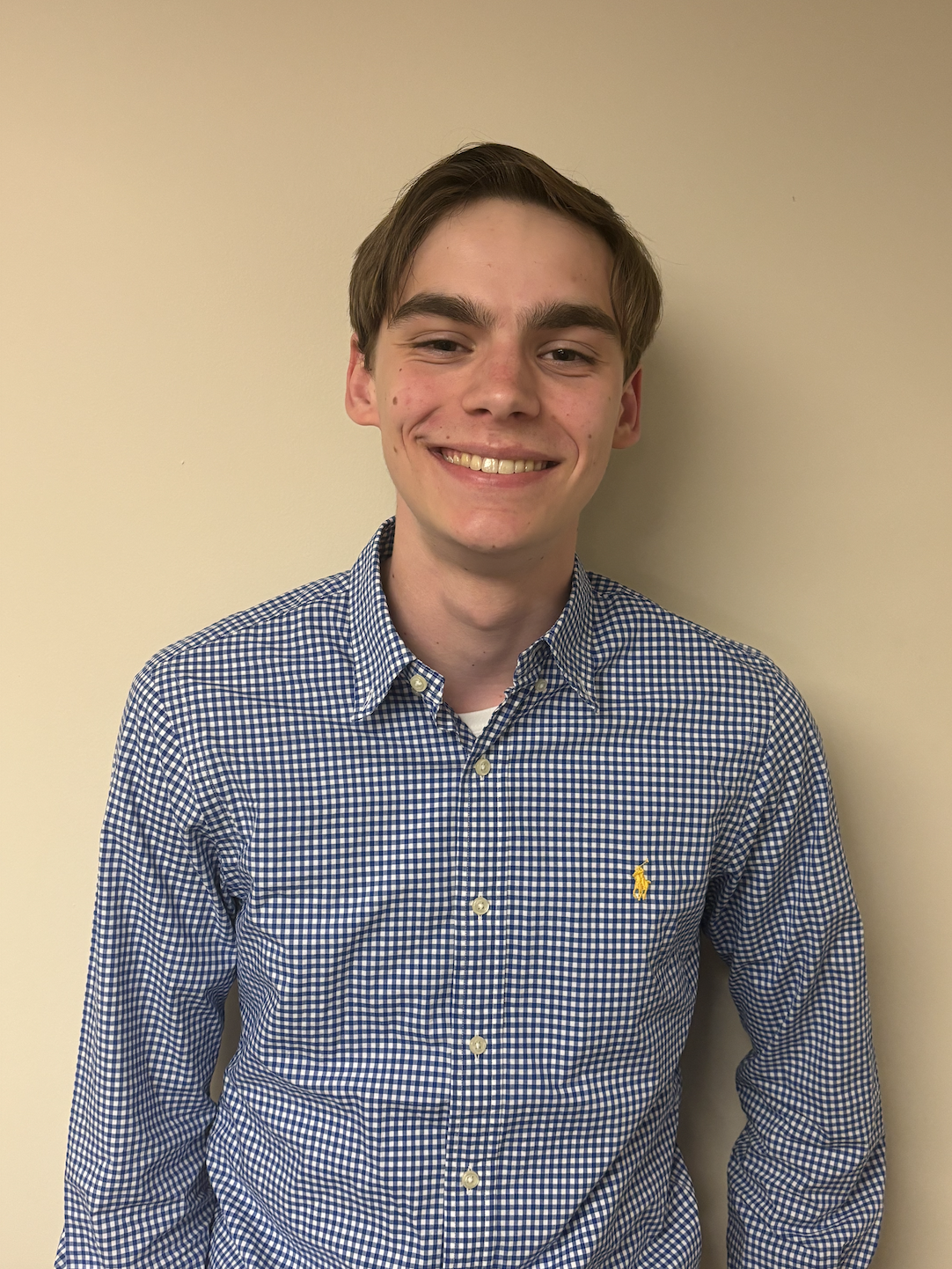
BIO
My name is Tynan Smith, I am a freshman industrial engineering major from Saint Louis, Missouri. I am trying to create a computer program to model the radiative cooling effect. Eventually I hope to work to prevent further climate change in some capacity.
Simulation and Experimental Exploration of Radiative Cooling
Authors: Tynan Smith, Luis PortoStudent Major: Industrial Engineering
Mentor: Luis Porto
Mentor's Department: Center for Advanced Power Systems Mentor's College: College of Engineering Co-Presenters:
Abstract
The radiative cooling effect is a method by which an object can be cooled without using any electricity. It occurs when an object emits energy in the form of radiation with wavelength between eight and thirteen micrometers in the direction of a clear sky. Radiation of these wavelengths can pass through the atmosphere and enter cold space which rids the object of the heat energy and as a result the object cools. Until recently this effect was only practical to use at night because objects that emit more energy also absorb more so they were gaining more energy from the sunlight than they could put back out. Then advances in materials allowed for sunlight of wavelengths outside of the eight to thirteen range to be reflected back while still emitting within that range. The application of this effect could reduce energy use and potentially help countries with limited electricity access to cool homes. By creating a computer program to be used as a mathematical model of the phenomenon and testing the program’s accuracy once completed, it could be made easier to test different surfaces’ radiative cooling potential. The testing found that the model is similar to other calculated data, but the data comes out too linear. Future research could attempt to quantify the effect of factors such as cloud cover and humidity so that they could be incorporated into a more accurate future model.
Keywords: radiation, cooling, model, simulation
24th annual Undergraduate Research Symposium, April 3, 2024
Gabriel Segurola Poster Session 2: 10:45 am - 11:45 am/176

BIO
I am a Freshman here at Florida State University studying Finance in the Presidential Scholars Program. Currently I am researching the effects of sports gambling on the economy and society. Outside of UROP, I am a Real Estate Investor under my LLC and do independent research on real estate for personal interests. Through the Sigma Alpha Epsilon Fraternity on campus I participate in many philanthropies and events bettering the Tallahassee community. I also enjoy playing basketball and volleyball with my friends in my free time.
Effects of Sports Gambling
Authors: Gabriel Segurola, Amy KowalStudent Major: Finance
Mentor: Amy Kowal
Mentor's Department: Anthropology Mentor's College: Anthropology Co-Presenters:
Abstract
Sports gambling amounts for several billions of dollars in circulation every single month. With that being said, in recent times mobile betting has become one of the biggest innovations making sport gambling accessible from anywhere in the world with internet connection. While the boost to the economy is great as a result, the psychological impacts on society, gamblers, families, and even the athletes is substantially demoralizing. Mental health of the subjects listed have been affected in so many ways that have lead politicians, bookmakers, and therapeutic institutions to change the ways they approach online sports gambling. While the leading reason that gamblers continue to gamble is due to the “one big win” that they are ever so close to attaining, sports books are always getting the “one big win” every time a bet is placed. Through analyzing data from studies and statistics, I was able to gather information giving an overview of the impact sports gambling has had on society. By combing through countless studies I was able to find the best ones which allowed me to create concise conclusions on its effects throughout society. The results found were that while sports gambling has been great for the economy and growing of the culture of sports, it has a history of ruining families and leading people down a path of exploitation and addiction. Overall, the study is open ended and allows the reader to come to their own conclusion by stating both positive and negative effects.
Keywords: Effects Sports Gambling
24th annual Undergraduate Research Symposium, April 3, 2024
Cameron Cook Poster Session 3: 1:30 pm - 2:30 pm /451
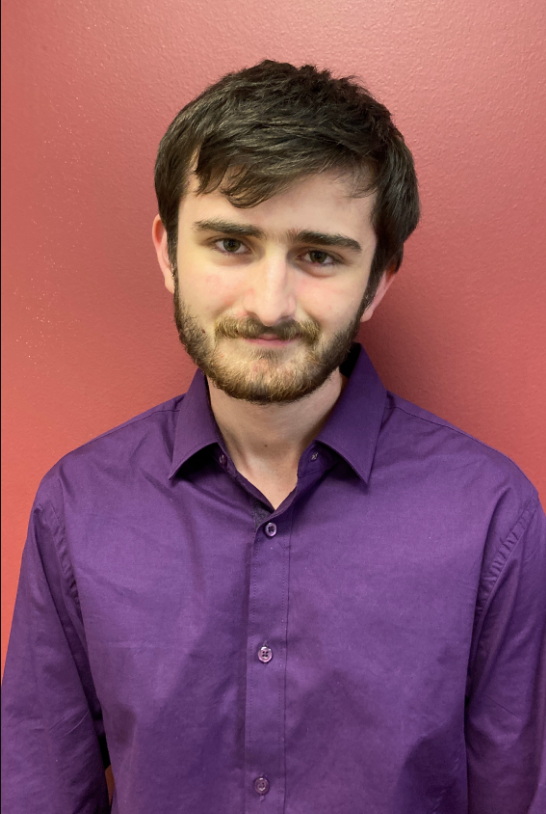
BIO
I'm a pre-meteorology student at Florida State University learning about the implications and solutions of meteorological events in every day life. I'm currently working to gain meteorological knowledge in every regard I can in order to make the greatest positive impact I can as a result regarding the global climate crisis.
Flood Data Collection And Processing For A Machine Learning Model
Authors: Cameron Cook, Maryam PakdehiStudent Major: Meteorology
Mentor: Maryam Pakdehi
Mentor's Department: Civil Engineering Mentor's College: Florida A&M University-Florida State University College of Engineering Co-Presenters:
Abstract
This research underscores the critical role of precise flood depth estimation in flood risk management and introduces a machine learning methodology tailored to enhance the accuracy of such estimations through hindcasting. The study primarily investigates the applicability and adaptability of a machine learning neural network model, initially developed for Hurricane Ida in the Lower Hudson watershed, by testing its performance on different hurricanes and locations. The goal is to evaluate the model's effectiveness across varying locations, conditions, and scenarios, and to understand the factors influencing the machine learning model’s performance.
To train and validate the machine learning algorithms, data from the NOAA and the National Hurricane Center were collected, filtered, and analyzed from nine hurricanes’ impacts between 2011 and 2022, each on one of six watersheds. These vital parameters included stream gauge water level, soil moisture, rainfall, tide, wind speed, and storm track data. This dataset was essential to train and test the machine learning model to grasp the complexities of flood dynamics and enhance its predictive capabilities.
While the results of this extensive study are pending, the anticipated outcomes aim to offer valuable insights into the viable efficacy of machine learning in predicting flood depths. This research is poised to contribute significantly to the field of flood risk management, highlighting the potential of advanced predictive models in ensuring community safety and resilience against the backdrop of increasingly frequent and severe rainfall events.
Keywords: Weather, Engineering, Machine Learning, Hindcasting, ANN
24th annual Undergraduate Research Symposium, April 3, 2024
Zoe Steelman Poster Session 2: 10:45 am - 11:45 am/278
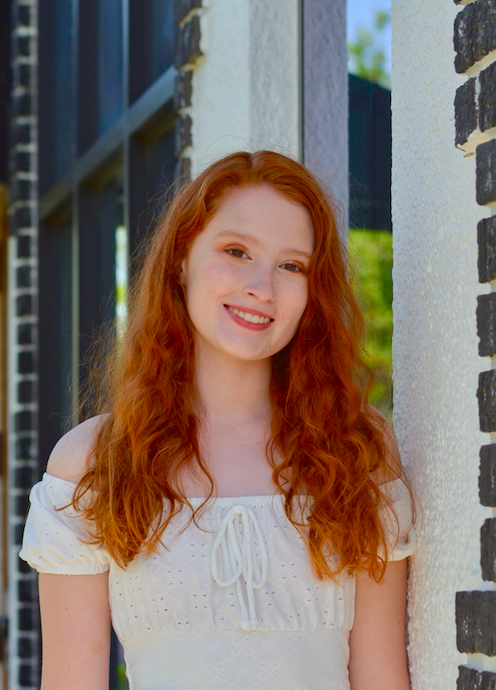
BIO
Zoe is a Neuroscience major from Polk County Florida. She aspires to become a Psychiatrist, with a specialty in rural medicine. Her interest in research stems from her belief that one must first understand the research behind procedures used before practicing medicine. Aside from her medical interests, Zoe would love to research the effects of theatrical performance on the brain; her dream project would study the long-term psychiatric effects of intensive theatre/dance training in childhood.
Tracing Melanin Concentrating Hormone in Mouse Olfactory Bulbs
Authors: Zoe Steelman, Dr. Douglas StoraceStudent Major: Cell and Molecular Neuroscience
Mentor: Dr. Douglas Storace
Mentor's Department: Biology Mentor's College: Arts and Sciences Co-Presenters:
Abstract
The olfactory bulb contains the preliminary neurological structures responsible for the perception of scent. These structures utilize the communicatory nature of several neuropeptides; however, the majority of these are largely unstudied. Previous research within this lab has explored the neural pathways of the neuropeptide orexin through immunohistochemistry (use of antigen/antibody binding and radiochemistry to visualize specific neural pathways) and denoted significant connections between the olfactory bulb and the hypothalamus. Mimicking this method allowed for the tracing of an otherwise unstudied neuropeptide within this area, Melanin Concentrating Hormone (MCH), which has a known association with olfaction and food processing. In this research, three mice olfactory bulbs were sliced to 40 micrometers utilizing a vibratome, and slices were infused via Green Fluorescent Protein (GFP) such that antibodies could determine locations of MCH activity in the olfactory bulb. It is theorized that MCH could be involved in eating processes such as hunger and satiation, and its presence in the olfactory bulb further substantiates these ideas and allows for a more specific interpretation of what these roles could be. Preliminary results indicate that MCH is present within the mouse olfactory bulbs.
Keywords: Neuroscience, Olfaction, Animal
24th annual Undergraduate Research Symposium, April 3, 2024
Peyton Cook Poster Session 5: 4:00 pm - 5:00 pm/263
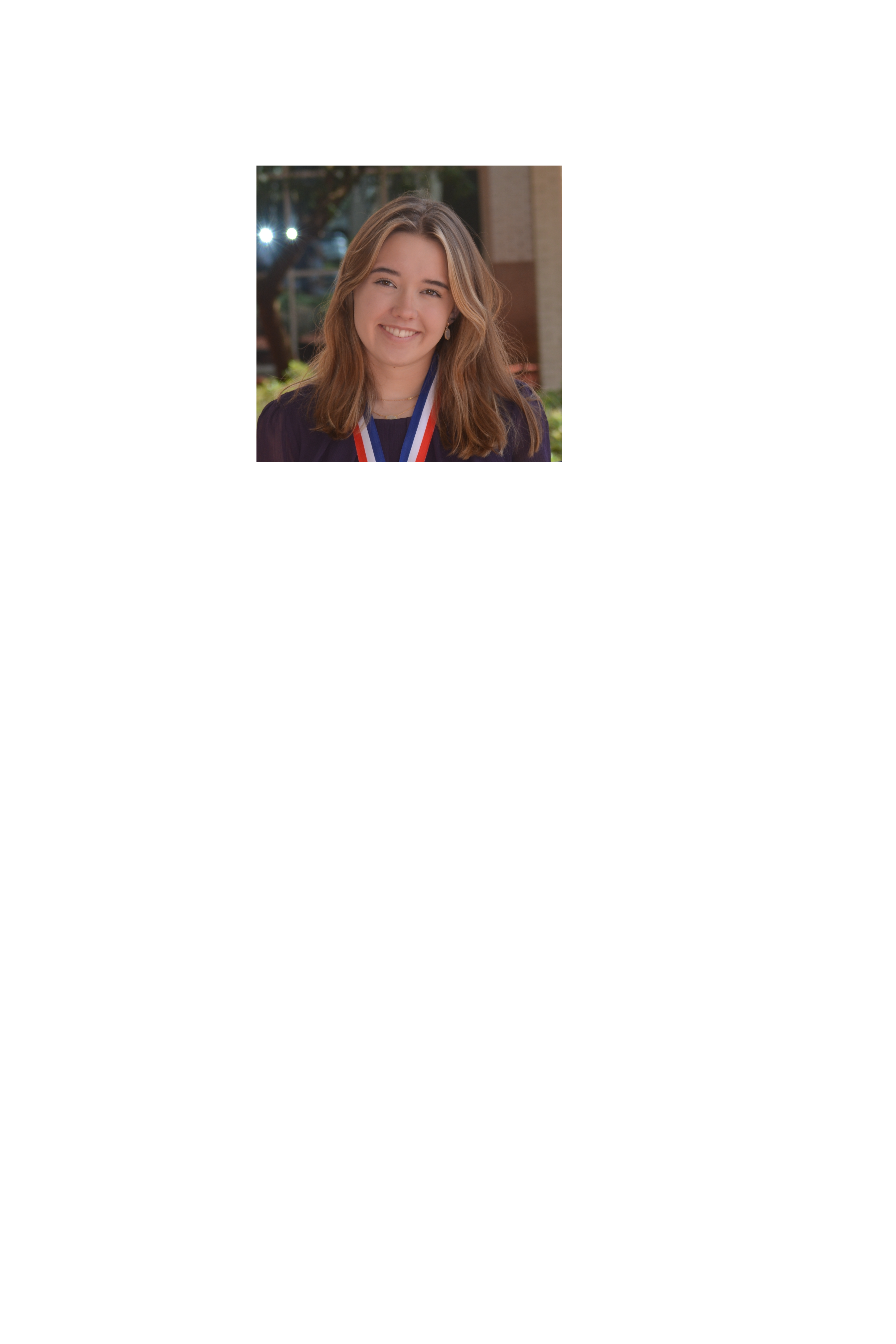
BIO
Peyton is a second year student studying International Affairs and Cyber Criminology. She is from Titusville, FL, a place that fostered her love of space and research at a young age. She loves any and all research about politics, social sciences, and the world around her.
UNMASKING PUBLIC LEADERSHIP THROUGH TWEETS: A MACHINE LEARNING ANALYSIS OF U.S. OFFICIALS' SOCIAL MEDIA USE
Authors: Peyton Cook, Guimin ZhengStudent Major: International Affairs + Cyber Criminology
Mentor: Guimin Zheng
Mentor's Department: Askew School of Public Administration and Policy Mentor's College: College of Social Science and Public Policy Co-Presenters:
Abstract
Twitter/X is an increasingly useful app for quick and easy
comunication with people all round the world. Because of
this versatility, Twitter has become a platform through
which news, data, and ideas can sqpread quickly. More
recently, X has become an incrdibly popular platform. for
policicians to communicate with their constituents quickly
and effectively. But how is this platform used?
Keywords: Politics, Twitter, Social Media, Voting, Government
24th annual Undergraduate Research Symposium, April 3, 2024
Rachel Walsh Poster Session 5: 4:00 pm - 5:00 pm/65
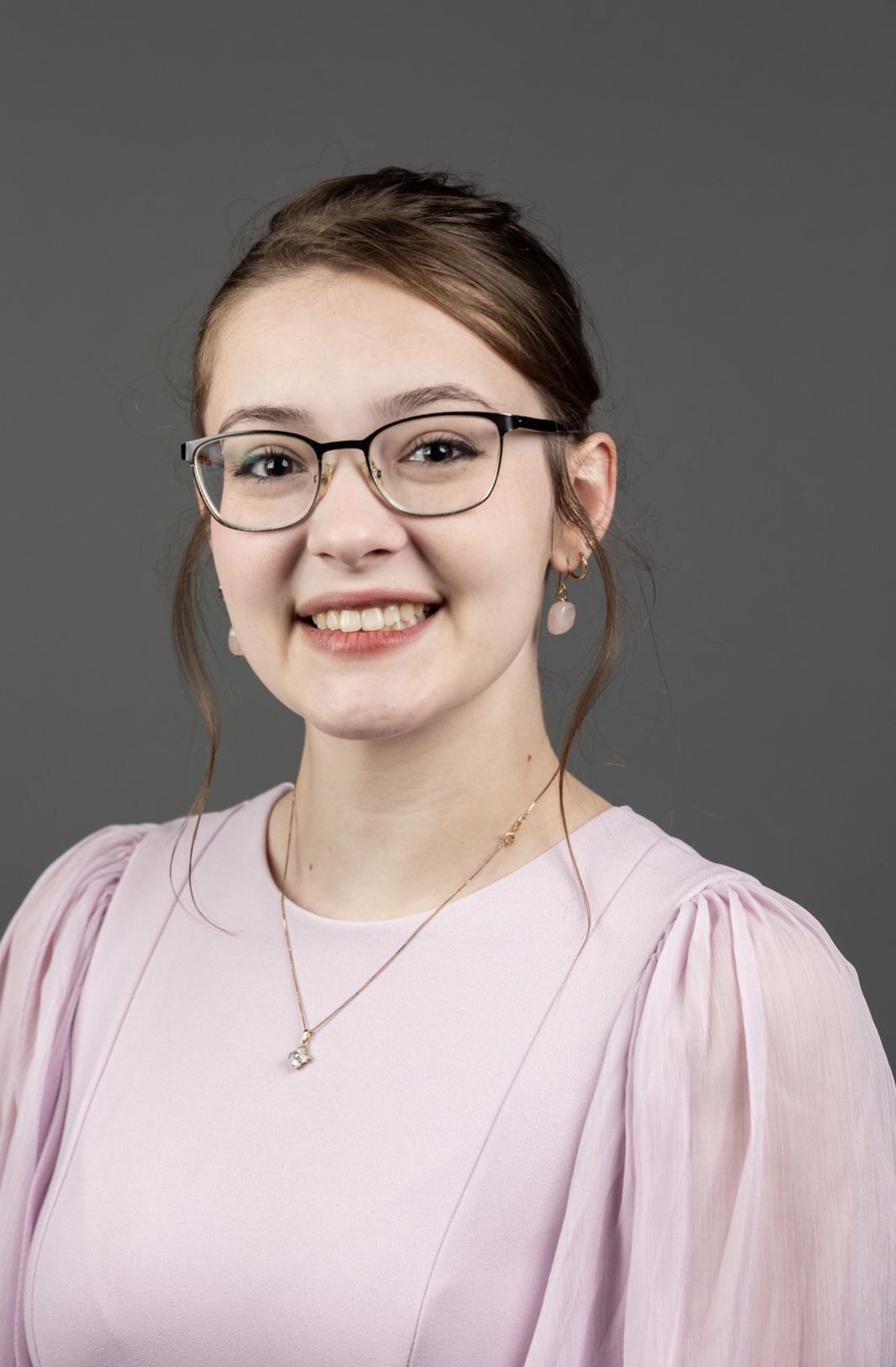
BIO
As a junior biochemistry major at Florida State University, Rachel (Rene) is interested in pursuing a Ph.D. in Biochemistry with a focus in cancer biology. Her research was performed at the University of Puerto Rico as part of a chemistry REU. Rachel (Rene) has a passion for breast cancer research and advocating for women's health. She recently presented this research at DiscoverBMB 2024, a conference held by the American Society of Biochemistry and Molecular Biology (ASBMB).
Basonuclin-1 in Inflammatory Breast Cancer: Tumor Suppressor or Oncogene?
Authors: Rachel Walsh, Esther A. PetersonStudent Major: Biochemistry
Mentor: Esther A. Peterson
Mentor's Department: Department of Biological Science Mentor's College: University of Puerto Rico at Rio Piedras Co-Presenters:
Abstract
Inflammatory Breast Cancer (IBC) is an aggressive and lethal cancer often diagnosed at later stages. Novel therapeutics for IBC depend on discovering more about the molecular signature of the disease. While analyzing RNA-seq data sets regarding transcription factors in both IBC and non-IBC cell line, SUM149PT, a triple-negative breast cancer cell line was found to have the highest RNA expression of basonuclin-1 (BNC1). While BNC1 has been previously associated with other cancers including breast cancer, extensive research has not gone into defining its role in triple-negative IBC. This study aimed to learn more about BNC1’s molecular signature, particularly in the context of triple-negative IBC. BNC1 was found to be primarily localized in the nucleus suggesting a potential role in gene regulation. Alterations in BNC1 expression have been found to have an impact on cell motility indicating an involvement with the migratory phenotype of SUM149. Our finding highlights BNC1 as a potential candidate for future investigations with the goal of developing therapeutics targeting BNC1.
Keywords: Breast Cancer, Cancer, Transcription Factors


